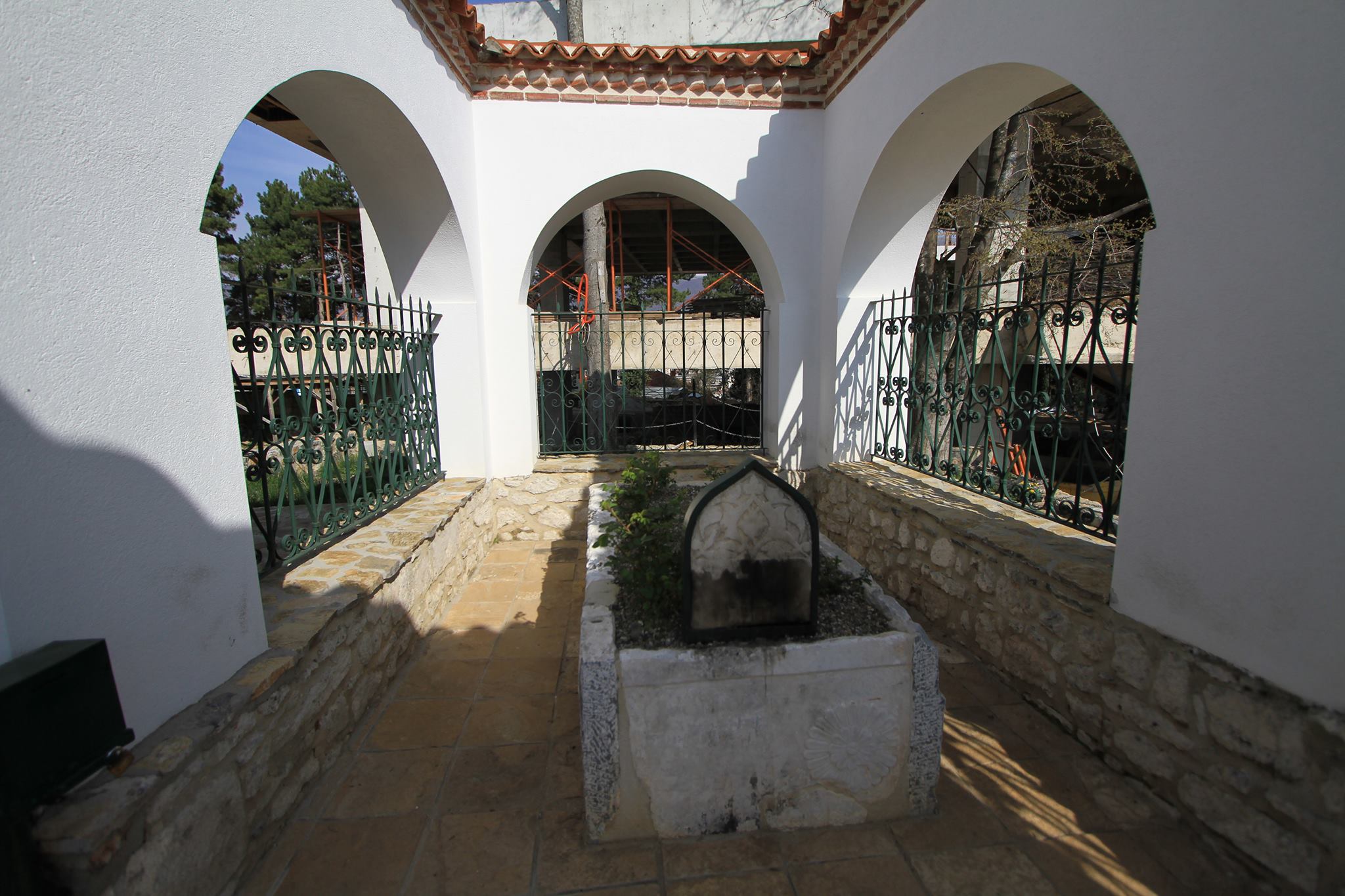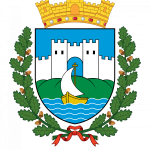Cultural attractions
- Home
- Cultural attractions
 Get To Know Us
Get To Know Us CULTURAL ATTRACTIONS- Ohrid Lake
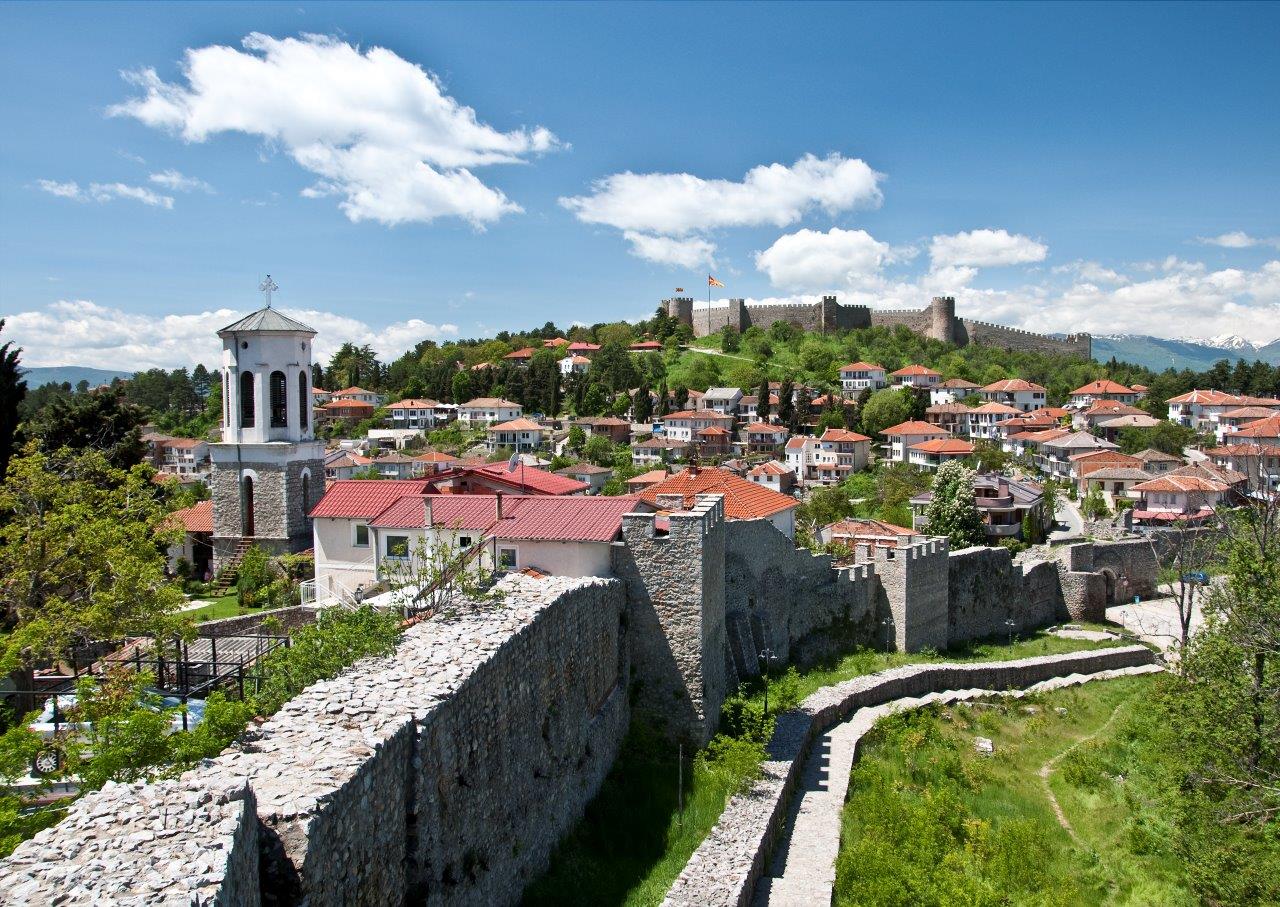
Waiting for adventures? Don’t miss them
Exploring Ohrid Lake: Ohrid Lake is deep and crystal clear. You can take a dip in waters that are over 2 million years old. The beaches are inviting, and the view of the surrounding mountains is truly impressive.

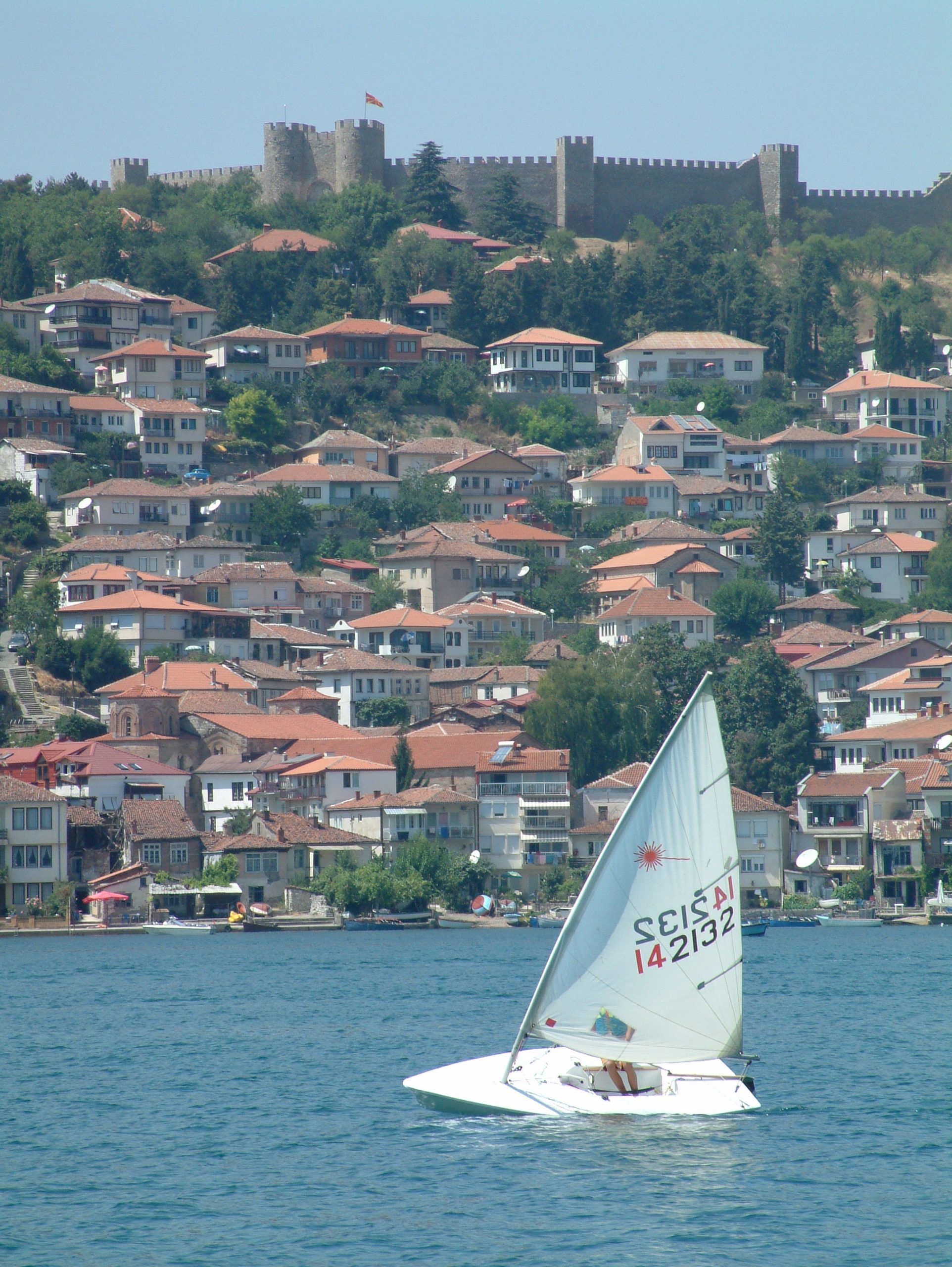



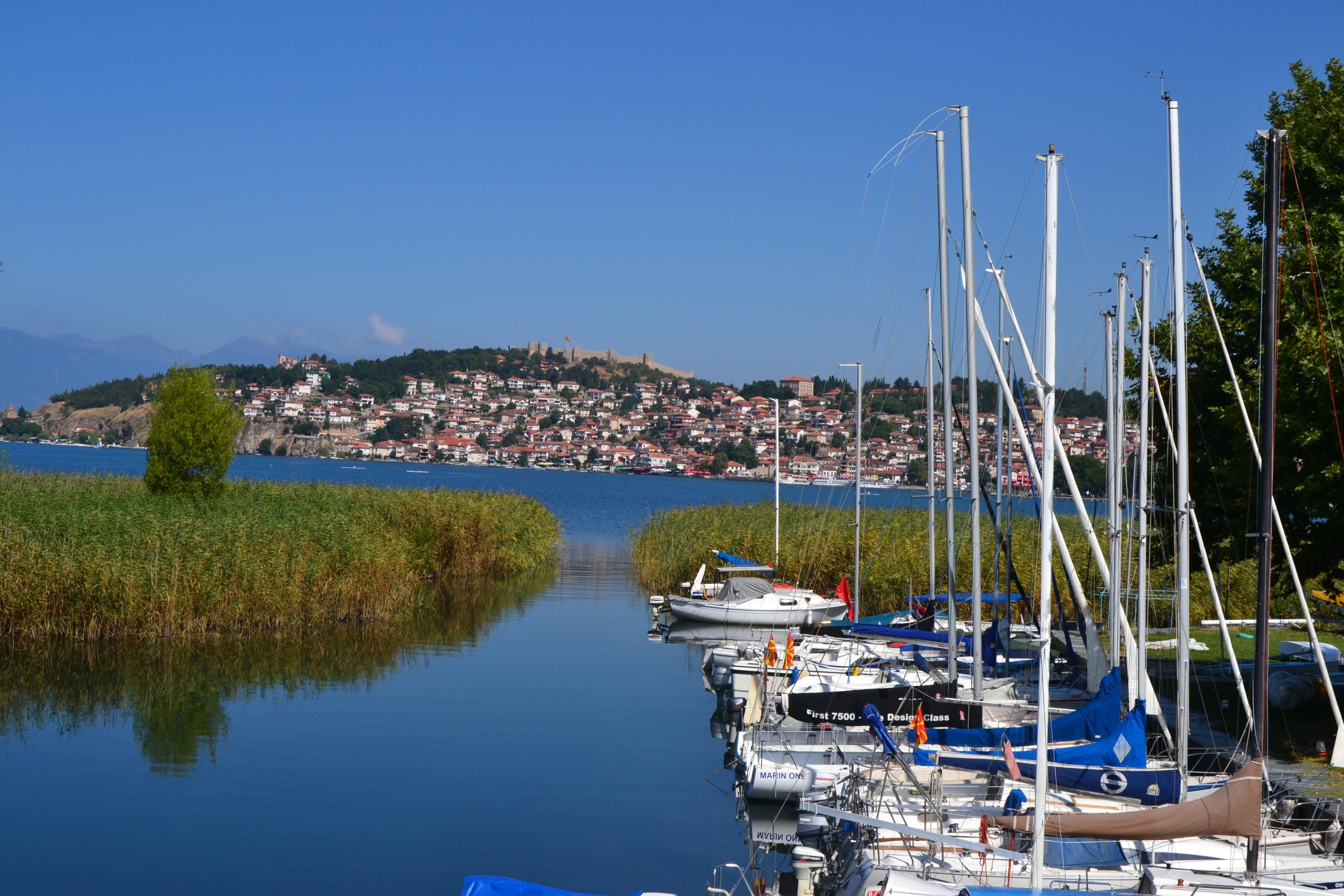

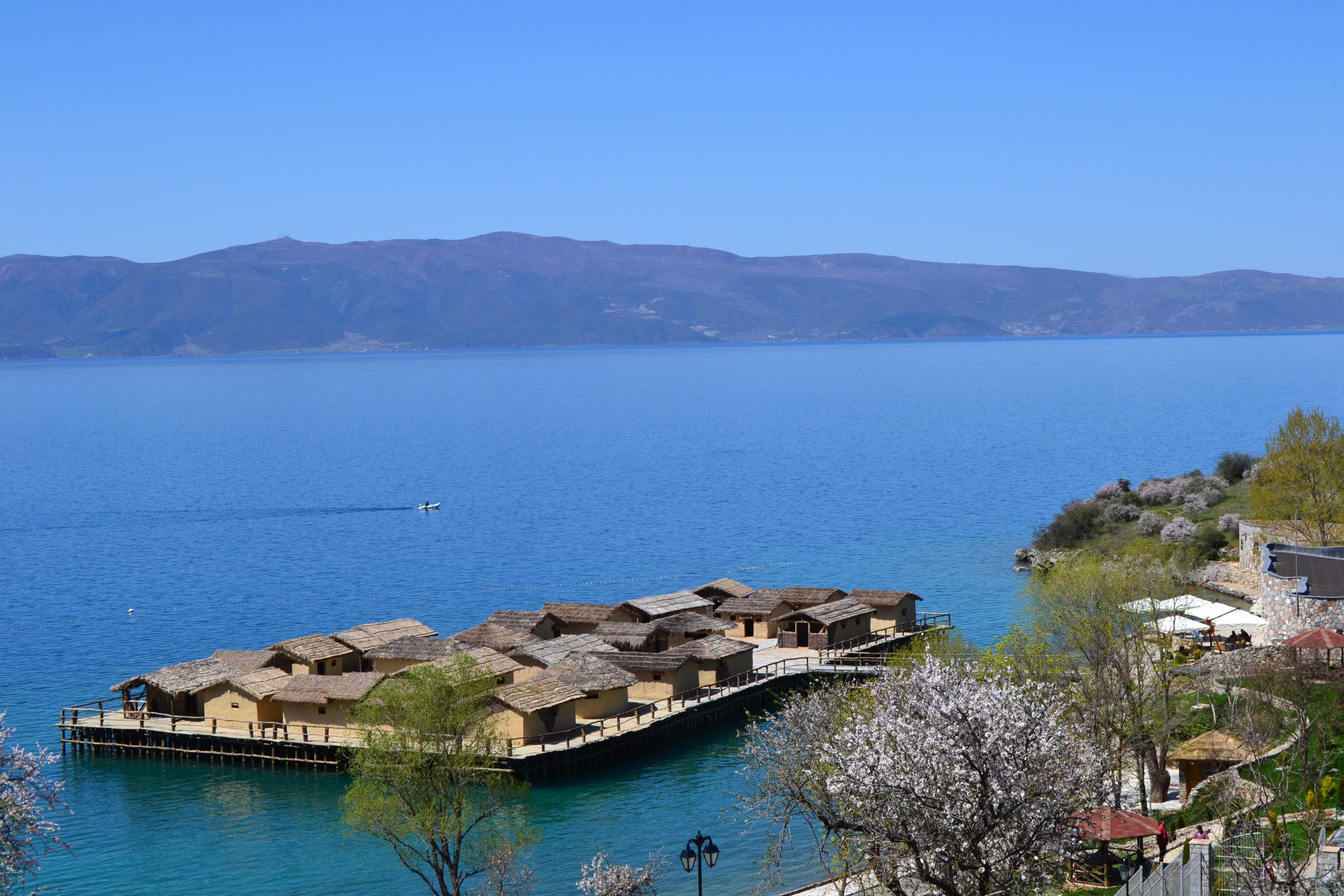
 History
History LIHNID / OHRID
The favourable geographical position along with the other natural features has provided conditions for continuous life in this region from the time of the oldest human civilization, through the prehistoric period and the different historical periods up until today. Different historical sources first mention Lake Lihnid. They describe the victory of the Macedonian king Philip II over the Illyrians in 358 BC. According to the historical sources, the king moved the borders of his country to the West joining the areas around Lake Lihnid, which does not mean that the town did not exist before that. The walls of Ohrid fortress date from that period.
Alexander III of Macedonia defeated the Illyrians in 335 BC. Illyria became a Macedonian province and Lihnid and the area Lihnitida became “the promised paradise area” in the upper Macedonian region. In the following years Lihnid was temporarily occupied by some more powerful Illyrian kings. However, the material culture from that time undoubtedly proves that the town had ancient Macedonian residency provenance whose doors were wide open to the culture of the developed Hellenic South.
In 209 BC Philip II was informed that some Europos occupied Lihnid after he bribed the commander of the fortress. However, the riot was quickly suppressed and the town remained Macedonian. In 200 BC the Romans ravaged Dassaretia and had a fierce battle in Lihnitida. Lihnid was occupied by the Romans and was given to their ally, the Illyrian king Plevrat in 199 BC. In the following years the town gained independent status and thus, Lihnid (in translation: “Town of light”) and Lihnitida , a type of an independent republic.
They had their own forge and money on which apart from the name of the town, a rowboat was put as a symbol of the town, whereas the Macedonian shield represented the ethnicity of the population.
In 170 BC during the Third Macedonian war, Lihnid was mentioned for the first time as the capital of Dassaretia. At that time Lihnid had 1.200 inhabitants and a lot of slaves. Three years later, Macedonia lost its independence and in 148 BC it became a Roman province. Lihnid and Dassaretia got a special status of a free community (Libera Gens). The next period was peaceful; Lihnid was far away from the wars and it remained an important station on the Via Egnatia road. It is known (partly from inscriptions) that apart from the theatre, there were other public buildings as well, such as: a gymnasium, a civil basilica, and temples. Unfortunately, due to the building of the modern Ohrid, these buildings have not been found. Archaeological artifacts from this period (the statue of the Goddess Isis, the Ancient Theatre…) indicate luxurious and rich spiritual life but also an important road from the North towards the South; namely, some Celtic helmets, iron shields and long iron swords have been found in Deboi. At the beginning of the 3rd century BC on the way to Delphi or returning from there, Celtic soldiers stopped in Lihnid.
In the late republican or early royal Roman period Lihnidos, like other provincial towns, enjoyed the “Roman peace”. Ancient sources do not contain information about Lihnidos. However, many epigraphic monuments have been recorded and analyzed. The epigraphic material contains information of different types – tombstones, honorary plaques, imperial posts and other material which clearly indicates that there was strong Hellenization of Lihnidos and its region. The Hellenist tradition tells us that at that time the town had an autonomous status of a polis (a“city state” in Ancient Greece) and it was the administrative center of Dassaretia. Life in the town was more developed in all spheres.
In the 4th and the 5th centuries Lihnidos was mentioned as an Episcopal centre and the town got new urban looks from an architectural perspective. Ten basilicas have been discovered in the old part of Ohrid. The three-nave old Christian basilica at Deboi is chronologically and symbolically a bridge or transition from the Ancient Lihnid to the Medieval Ohrid.
In several Byzantium sources Lihnid is identified with Ohrid. Ptolemy writes about “Lichnidon he Achrida”, Skilis says that the town Achris was situated on the high hill, next to the big lake Lychnidos, after which the town was called Lychnis.
The late Ancient period was characterized by frequent threats from barbarian groups. The fortress had been restored at that time as well. According to Procopius, Lihnidos was mentioned for the last time in sources that described its destruction, which apparently happened in 526 when Justin I ruled. During the Migration Period, this civilized fortified town was often attacked by the Huns and the Goths. Earthquakes, different epidemics, frequent robberies by the Avar tribes diminished the town and rounded up a period of its life – the Ancient period. Yet, life continuously went on. In the next period there was new ethnicity in the town – Slavic people and the town became a bridge between Byzantium and the Southern Slavic people.
Slavic people were organized in tribal communities. At the end of the 6th century the surroundings of Lihnid was completely colonized by the Slavic tribe Berzits organized in the community of Berzitia.

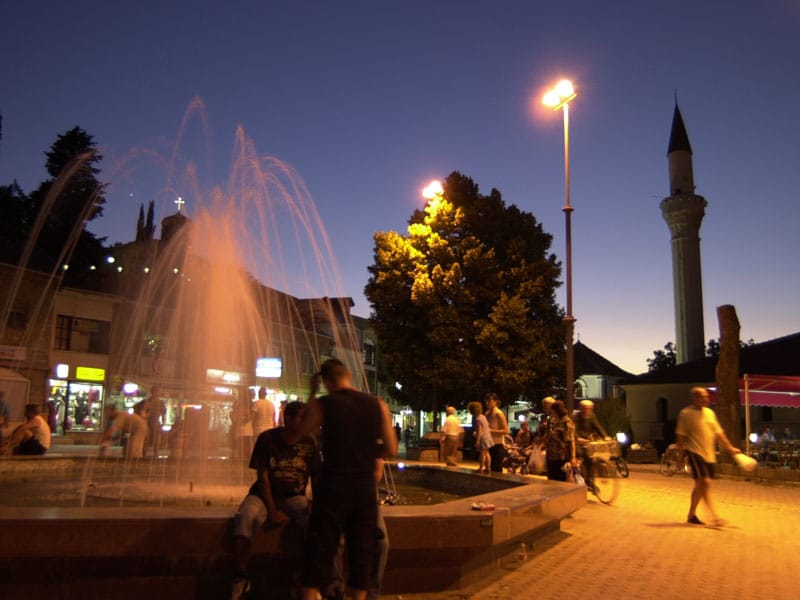

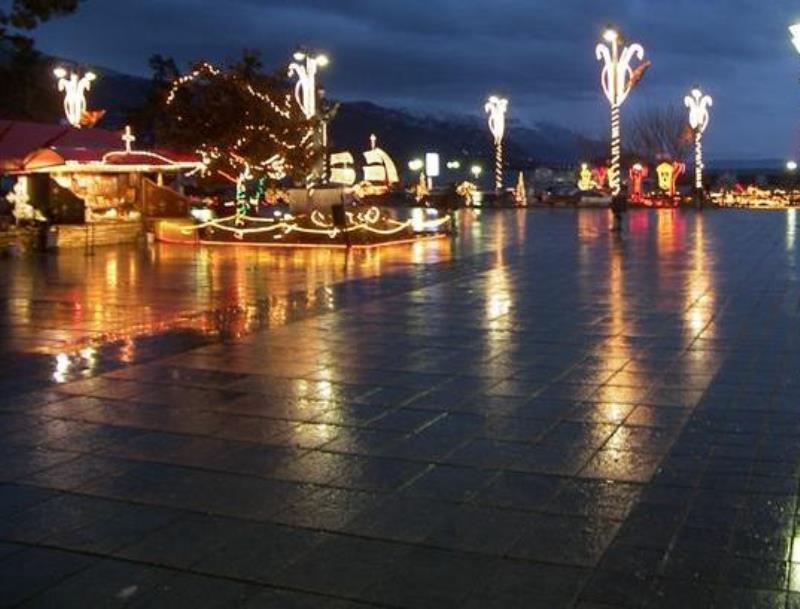
 Lake Ohrid
Lake Ohrid THE SQUARE AND THE PORT
The heart and pulse of the city of Ohrid is the Ohrid Squere.This is most popular, visited, favorite and noisy place in the city, through the day and through the whole night. Constantly, the most importtant events occur here. The Square named Saint Kliment Ohridski, as a heart of the city connects the main shopping street and the quay along the lake coast, but also conects all the streets the lead to the cultural and historical monuments and city beaches. As every other city squere,the Ohrid squere has many coffe bars, jewelry shops,souvenir shops, etc.It is decorated with monuments,statues and memorials for significant citizens.
As a component part of the square are the moving stages inteded for diffrent performances as choir festivals, folklore festivals, etc. The way from the Square leads in the directions of the lake, while at the other side of the squere is the main shopping street which takes us through the Ohrid district.

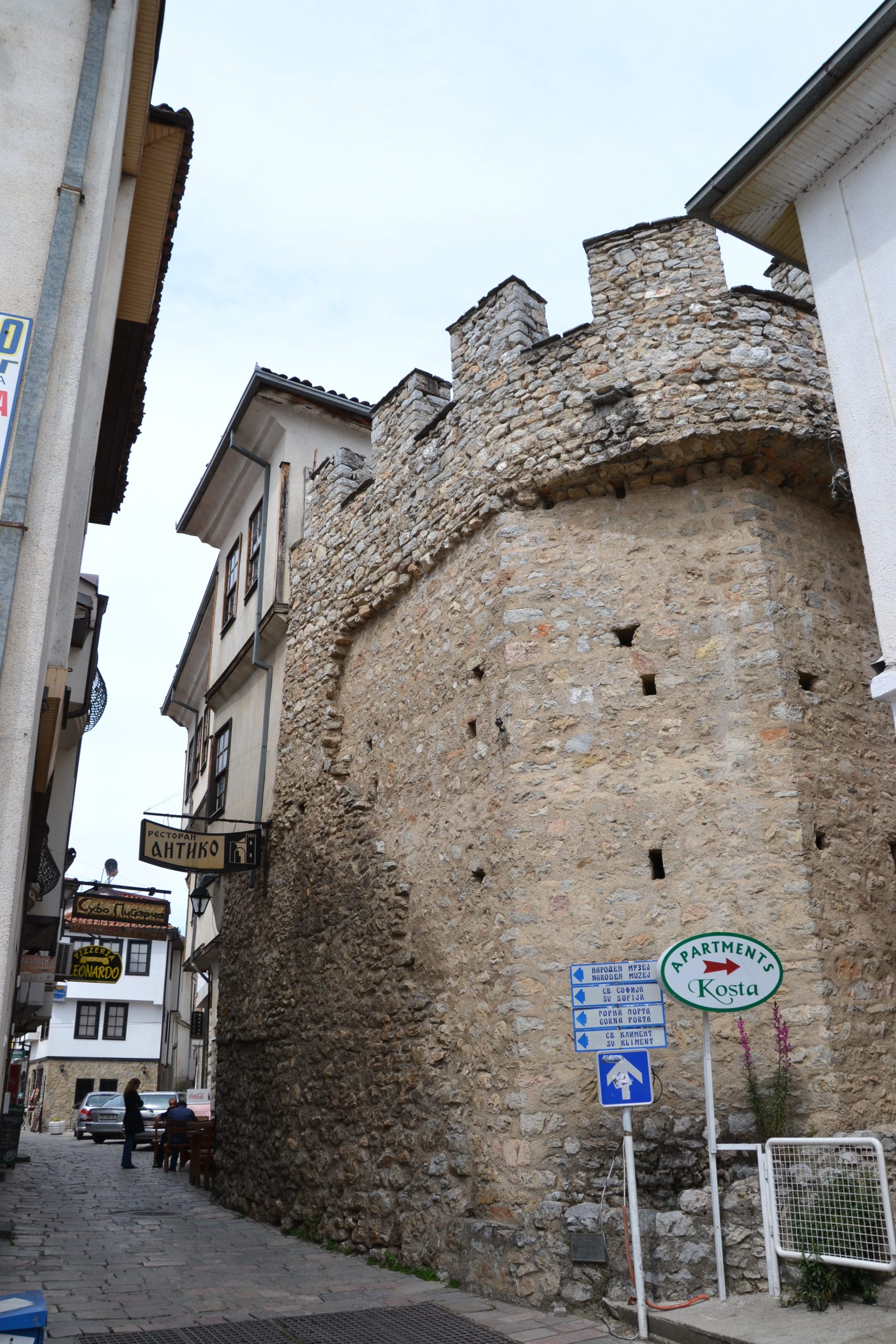
1. DOWN GATE
The main street throuhg Down Gate is still the busiest street (these days it is called Street Tzar Samuel).There are many remains which are found near Dolna Porta.In the past the street was the most important one with a lot of shops ,inns,bakeries and craftmen’s shops.In the rough medieval times the town suffered from plague; so close to that gate were placed small hospitals for check-ups and quareantines for the travelers.That is why the first 2 churches that are near St. Nikola and Church Mary Mother of God are called Bolnichki (from the word '' bolnica which means hospital).

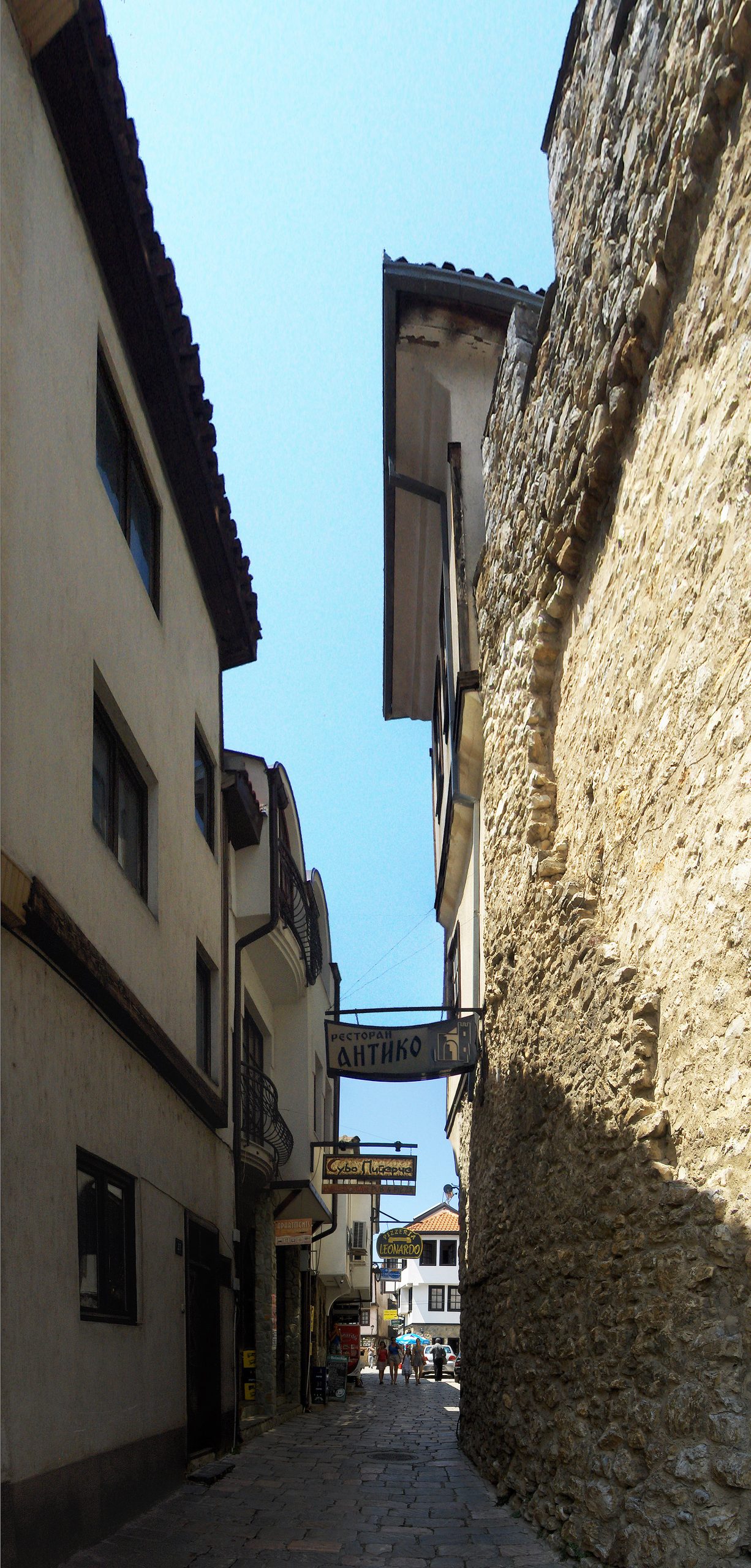

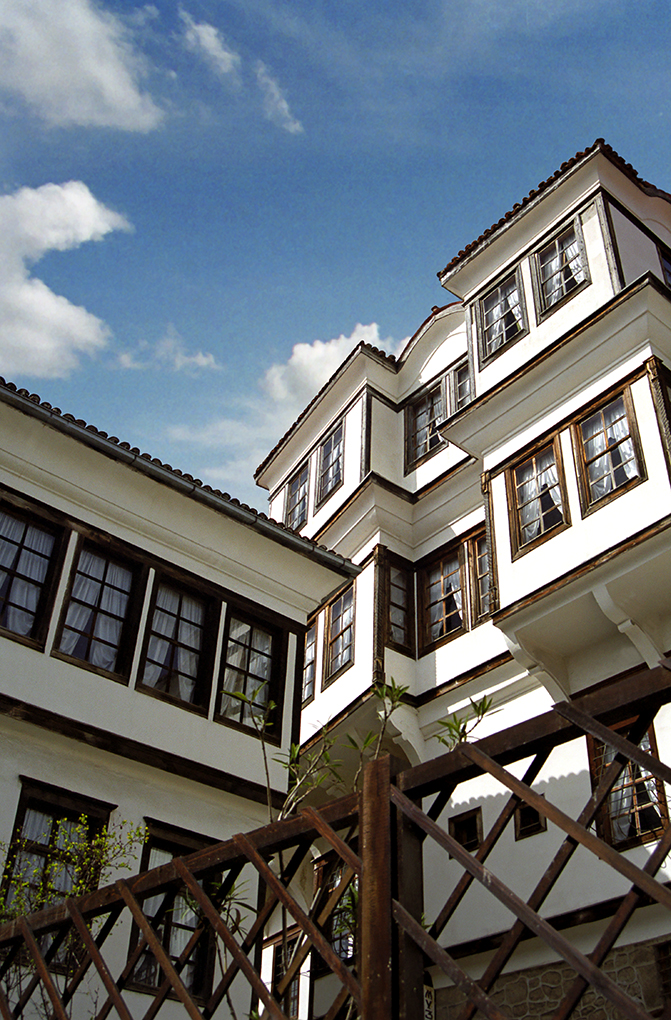
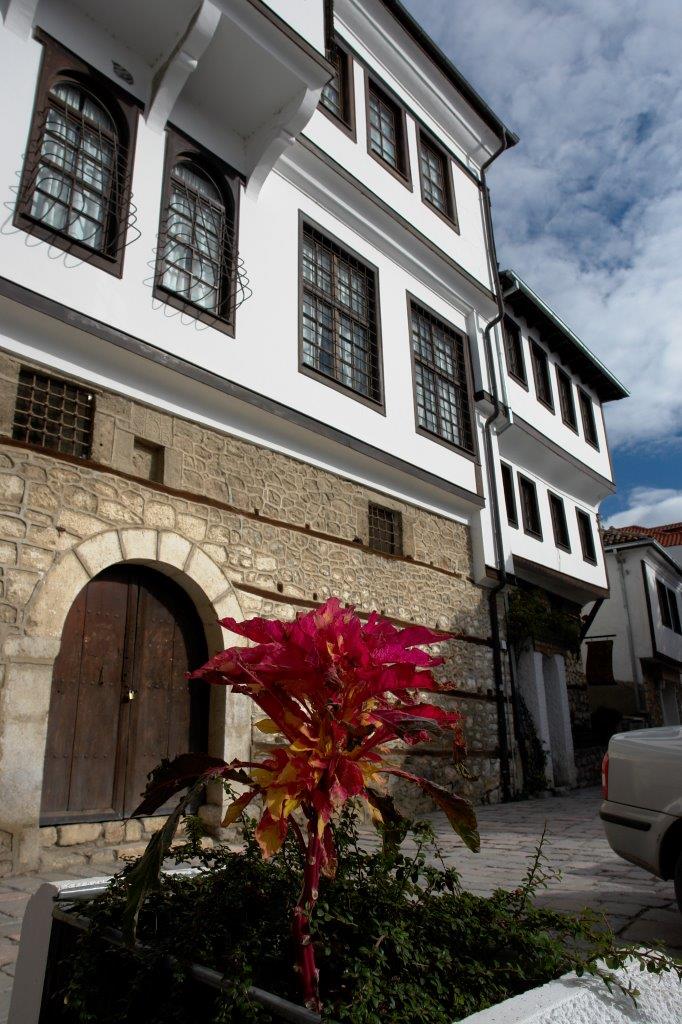



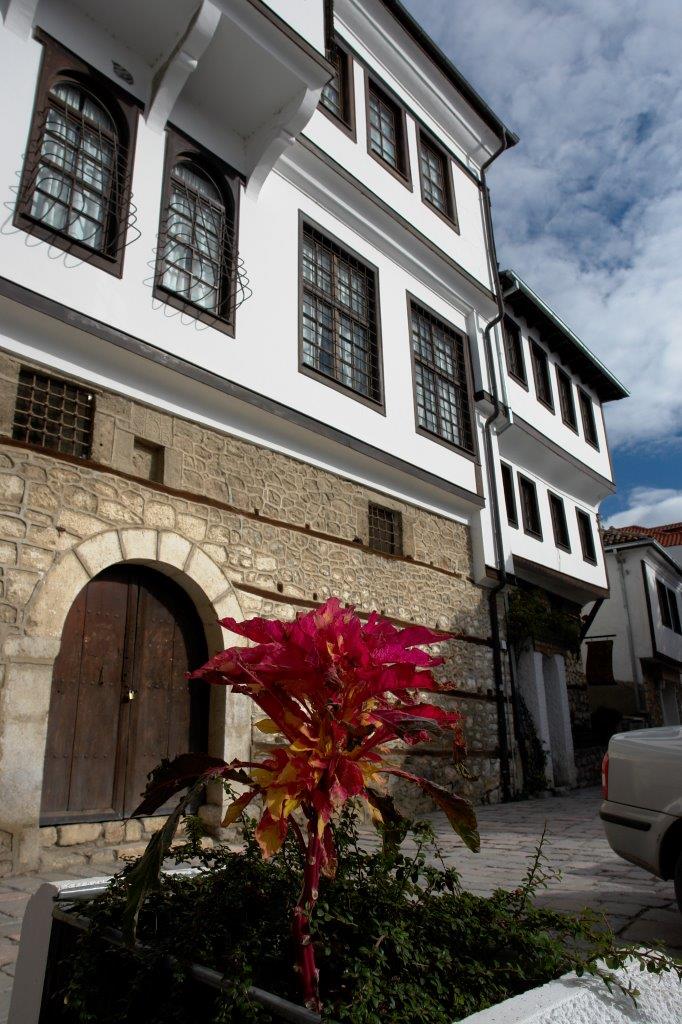
2. THE ROBEVI’S FAMILY HOUSE
The town planners say that Ohrid house is made to fit the nature, therefore, it seems as if it grows from the earth, the rock, and the hill. At the same time, the same house with its exterior, its interior structure, organization and its decoration is made to fit the man. Because of that, we have the feeling that the man and the nature get very close together (N. Boshale).When one views Ohrid from the lake, he/she gets the impression that the shining white houses on the hill, tightly packed, rely on each other, but also they compete with each other to gain more sun and air and a more beautiful view to the lake. Rare, but preserved houses from preceding centuries are fascinating not only because of their beautiful exterior, but also because of the interior construction of their floors, rooms, balconies and stairs.Jast above that small cobbeled street are the beautiful houses of the famous Ohrid ‘s merchant families such as: Bodlevi,Kackov,Robev,Savinov,Sapundjiev ,Krapcev ,which show monuments of the Ohrid’s town architecture from the middle of the 19th century.They share white facades many windows and wooden terraces.This architecture was admired by Le Corbusier himself ,the father of the modern architecture.Today the houses of the Robev and Uzunche family are turned into museums with priceless artefacts.The Macedonian Academy of Science and Art was formed in the house of Urania.The houses which are built so tight one to another form shades that allow walk and strolling in the summer heats.The Robevi’s family house in Ohrid is of course the most representative construction of the city architecture in Macedonia, whose greatest rise was during the XIX century. The house belonged to the Robevi family, who left their distinctive mark on the overall life in Ohrid and Macedonia during the XIX century. The house was bought by Angele and Taso, the sons of Stefan Robe. They bought it from Jakim Pendo, a wealthy fellow citizen from the rich neighbourhood “Hospital” in 1825. After they demolished the old house, they built a new one, where the trade and intellectual elite of Ohrid gathered at that time. Of course, some eminent people from other towns and from abroad went there too.Unfortunately, one day in January, 1861, the Bey called Ustref burned the Robevi’s house from unknown reasons. The Robevi family hired new workers to build two separate houses at the place where the old house existed. The workers, led by the Miak person Todor Petkov from Gary, completed the two houses including their interior – the ceilings, the cupboards and other decorative elements made of carved wood. The two connected houses are a successful architectural piece, which has fascinated people for 150 years! The workers (construction workers and carvers) were divided into 2 separate groups. The two groups were not allowed to communicate with each other; they were not allowed to see the work of the other group until the houses were completed. They moved into the house in 1862. This is witnessed by a preserved fresco – a vase with blue flowers and an inscription of the year 1862. It was created by Dicho Zograf, the most famous fresco painter and iconographer of that time.The Robevi family lived in the newly built house until 1900, when they moved to Bitola. They would return in Ohrid only in summer. From 1913 until 1919, during the Balkan war and the First World War, Serbian soldiers were accommodated in the house. After they left, the house was considerably damaged, whereas part of the carvings were taken to Nis, Serbia. After the Second World War, in 1945, the house was protected as a cultural and historical monument. Today, some museum exhibits are placed in the house and there, one can see the Robevi family’s moveable rich inventory.

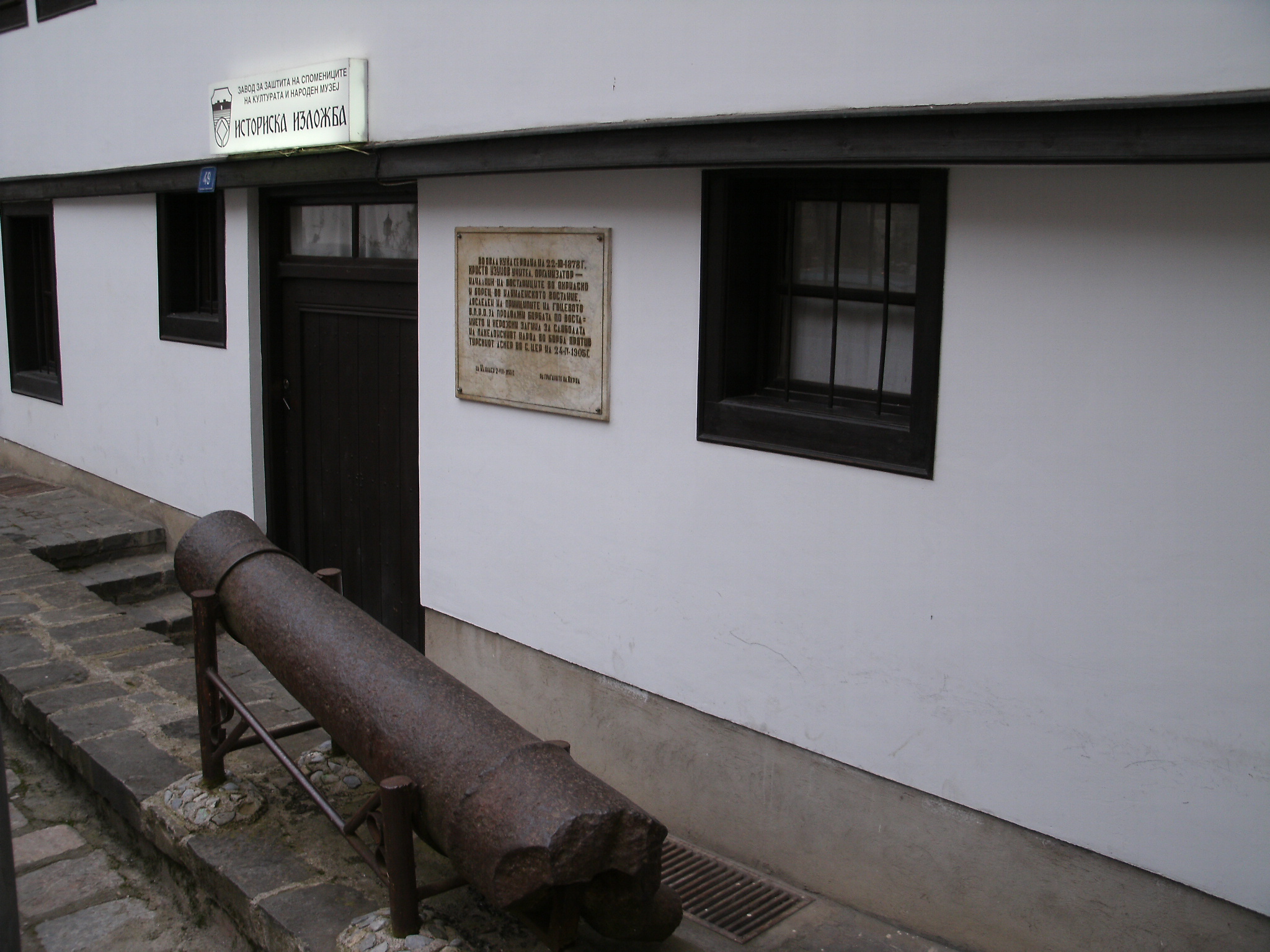

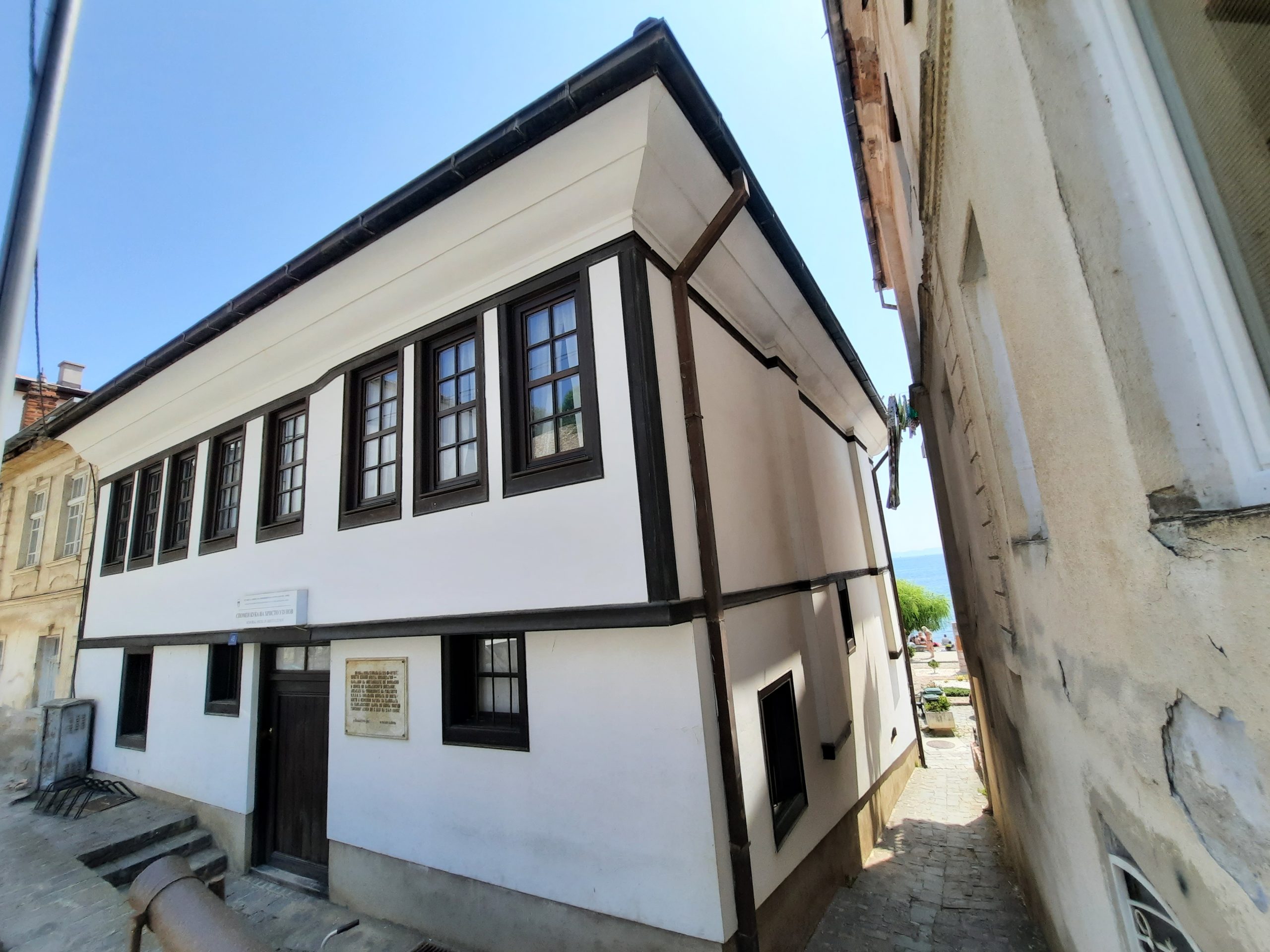
3. THE HOUSE OF HRISTO UZUNOV
The house of Hristo Uzunov was built in the early 19th century by Hristo Uzunov, the grandfather of the famous Ohrid revolutionary Hristo Uzunov (1878-1905), and this is the House where lived several generations of this recognized and credited Ohrid Family. In 1976 the house was recovered and designed for maintaining events and permanent exhibitions with materials thart witnesses the national freedom mevement of Ohrid and the region of Ohrid. In addition,inside the House there is a memorial room dedicated of the great teacher and revolutionary from the Ilinden period and before.
CHURCHES
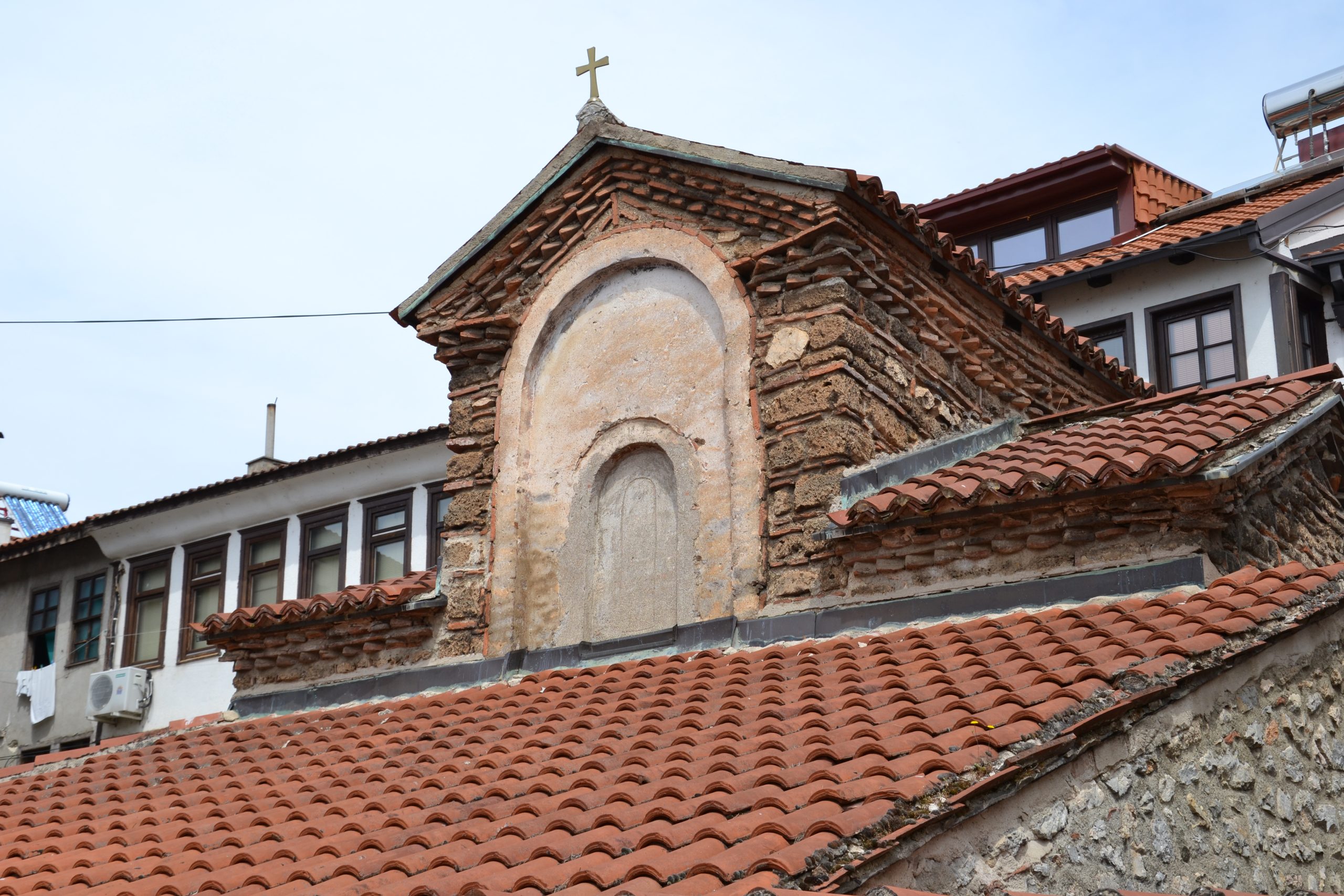

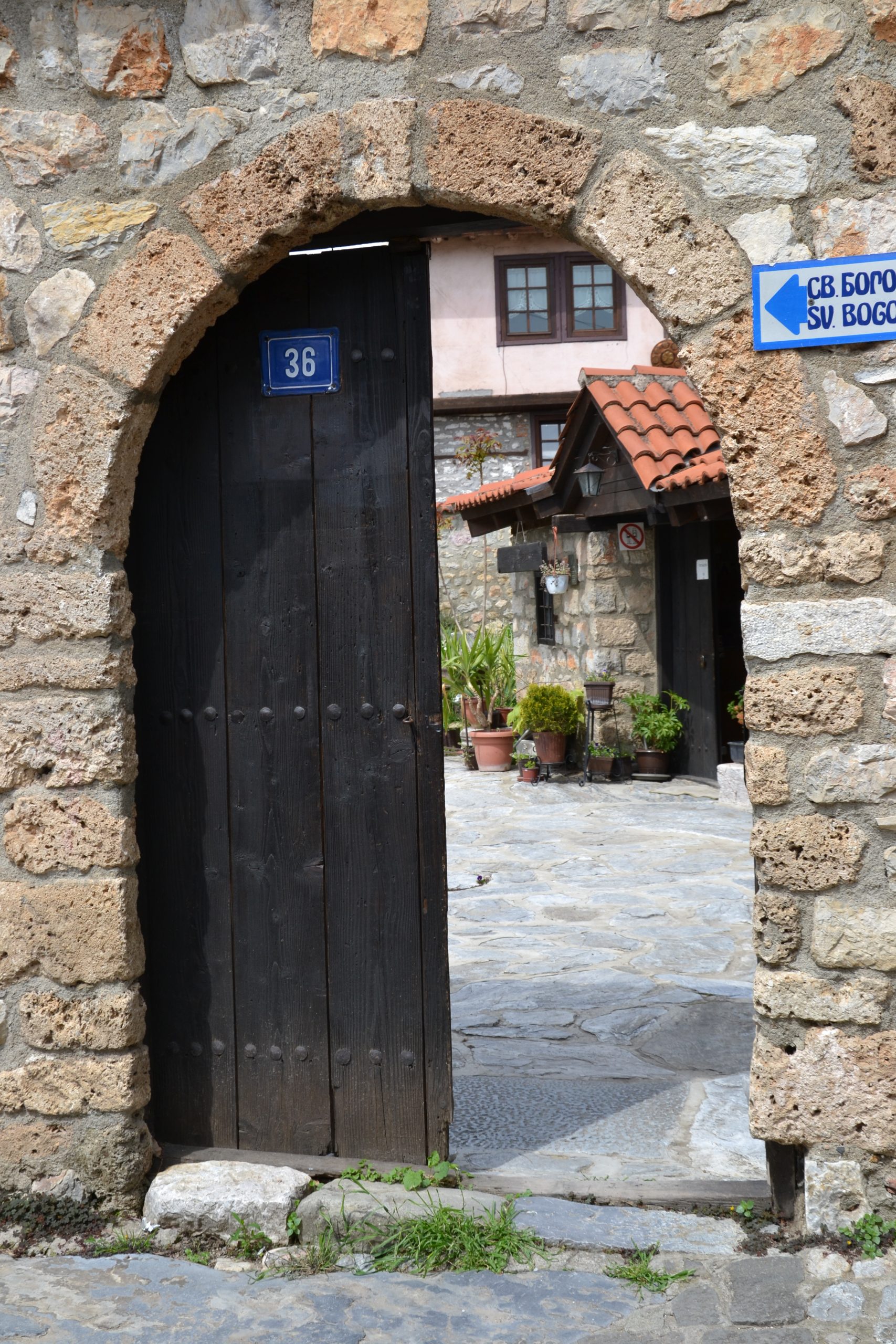
4. THE CHURCH OF ST. NIKOLA AND CHURCH MARY MOTHER OF GOD BOLNICKI
The church of St. Nikola Bolnichki is characterized by double church bell unique with its form in Macedonia.There is a small path which leads to the only church named after the Patron of Ohrid St.Kliment Ohridski .All 3 churches have extraordinary architectural style and with their icons and frescoes belong to the Local Ohrid Painter's School.

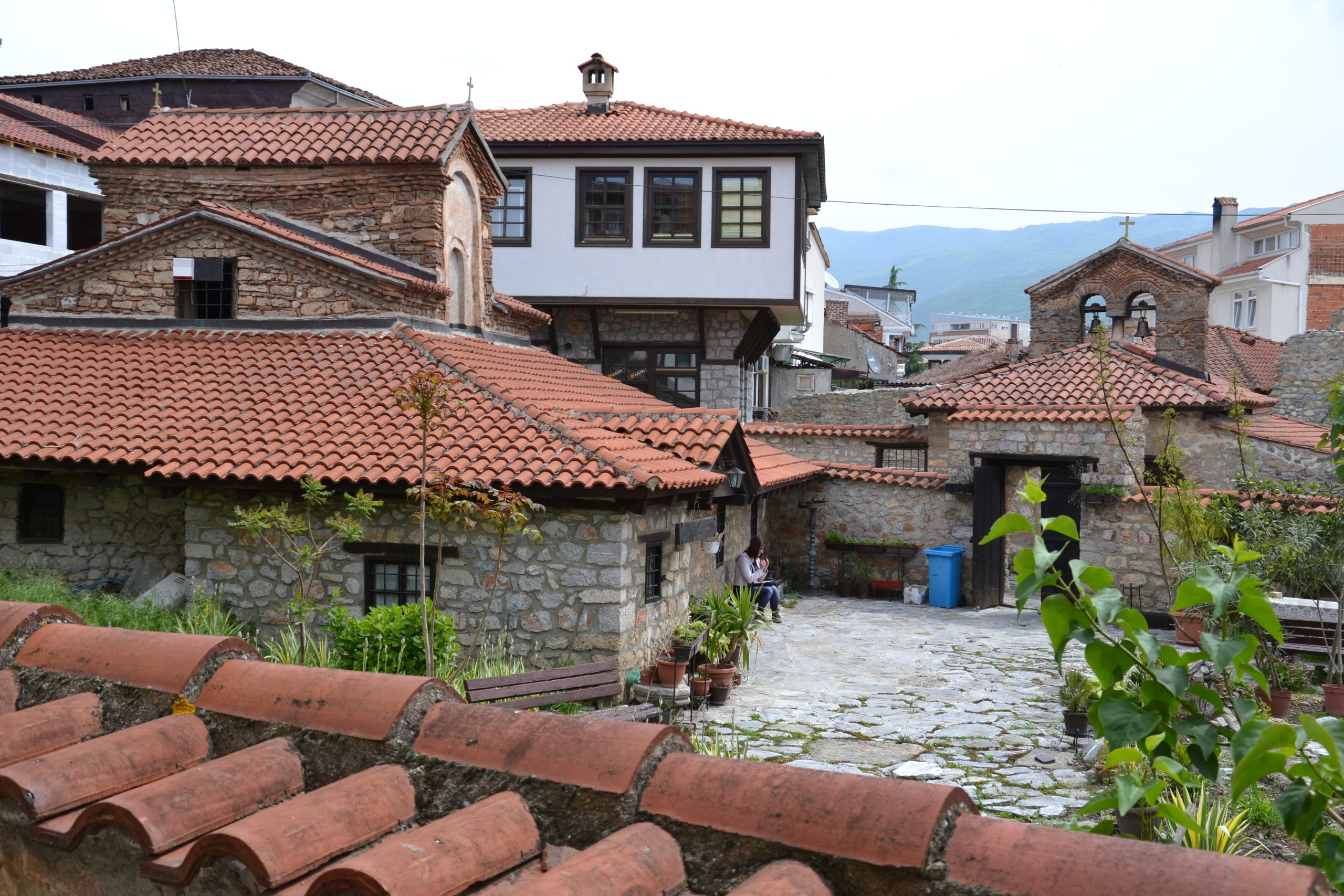

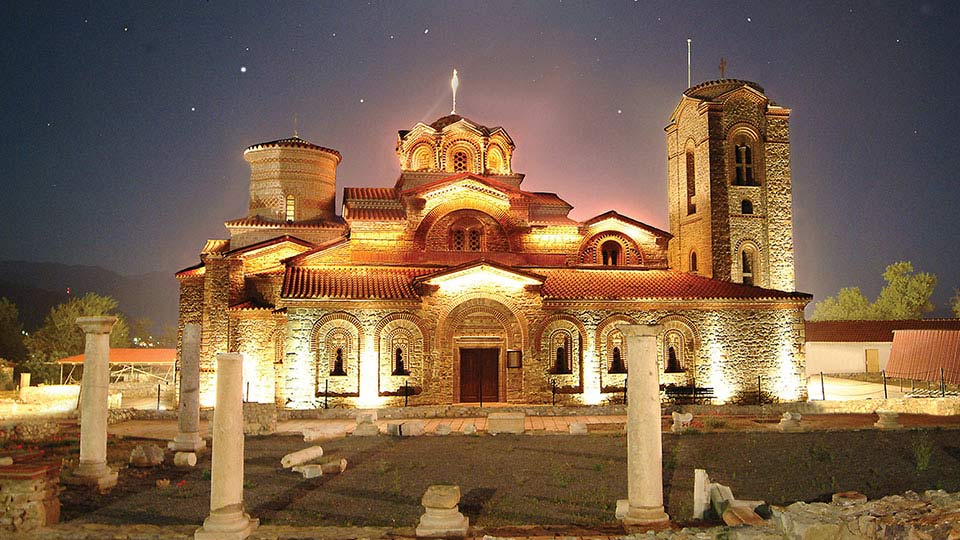

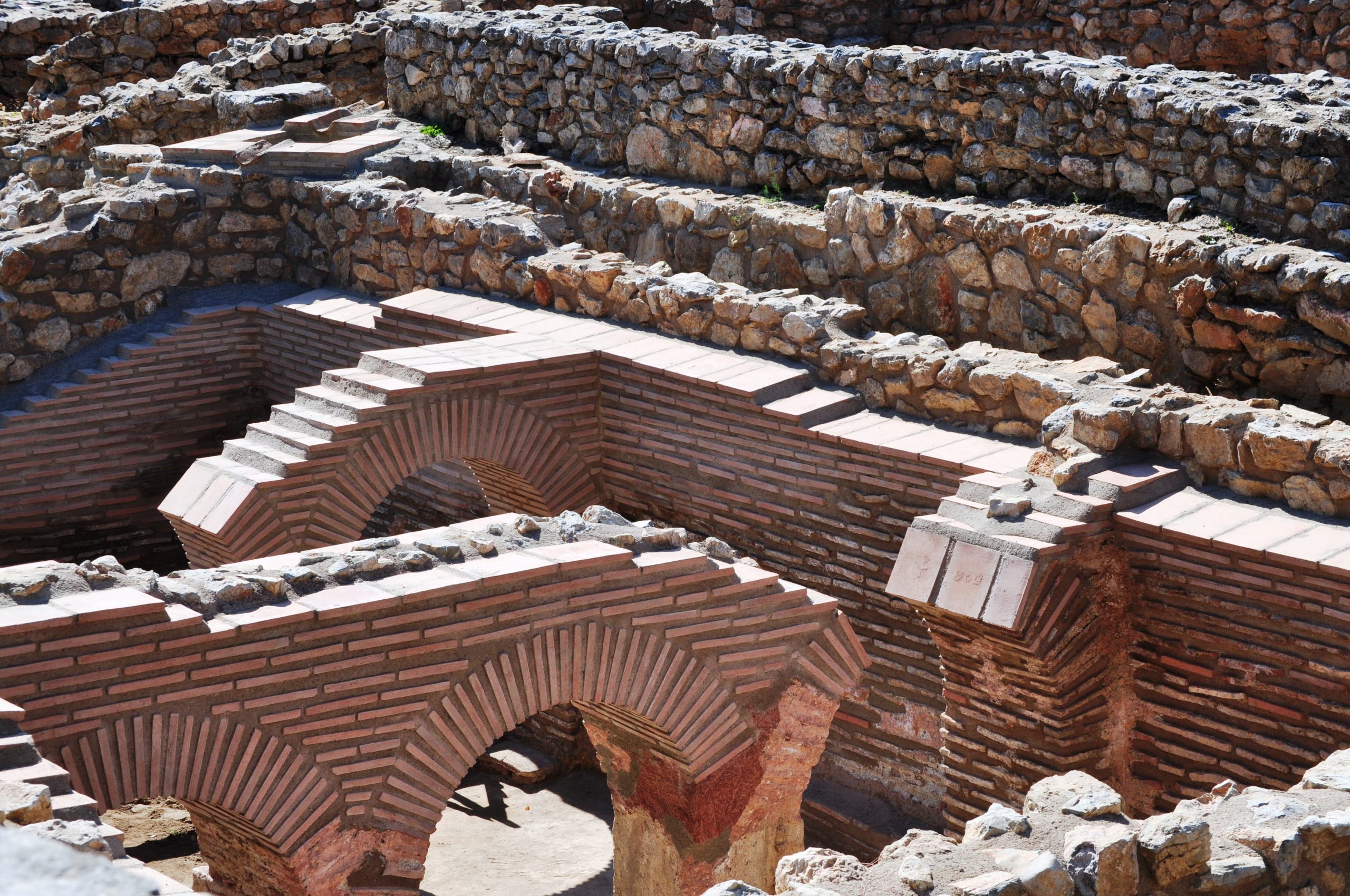

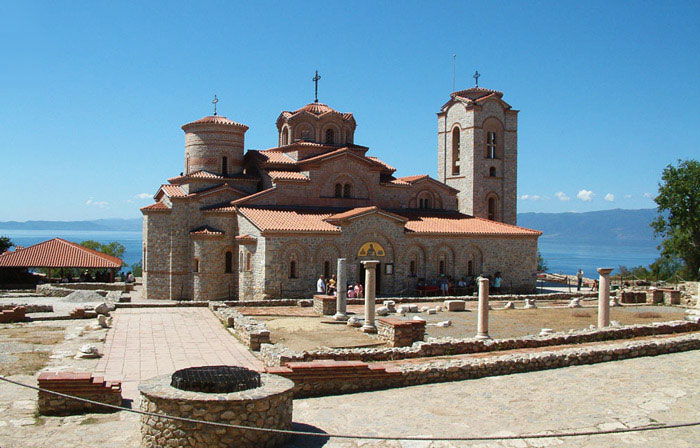

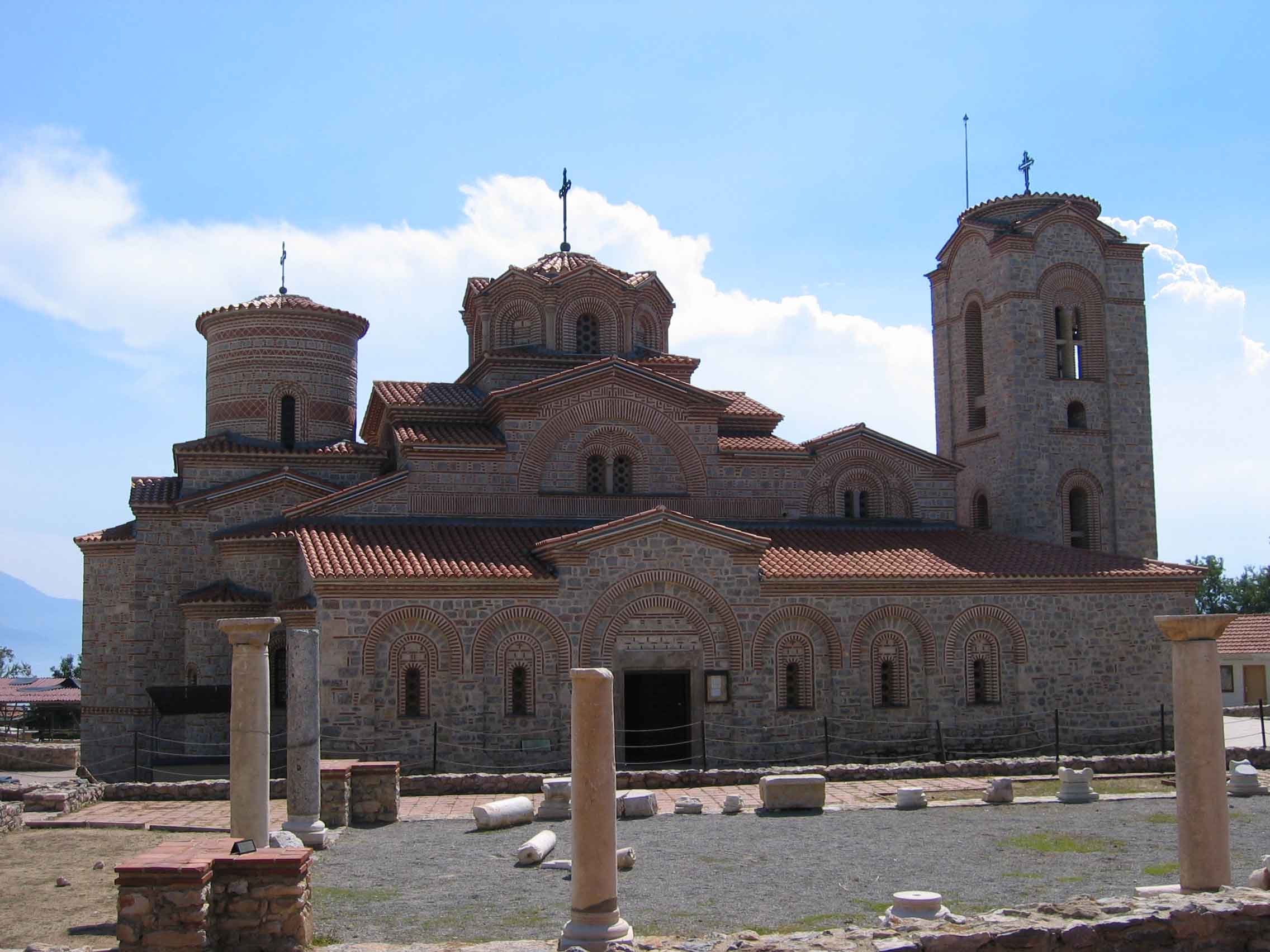
5. MONASTERY OF ST.PANTELIMON – PLAOSNIK
The oldest Slavic monastery in Macedonia is the Saint Panteleimon Monastery, erected in 893 by Saint Clement of Ohrid in the Plaoshnik area. He, thus, created a new cultural cradle in Ohrid - it was the flourishing of the Slavic culture and literacy. Saint Clement of Ohrid established the first Slavic Literary School in the monastery, also known as the First Slavic University, which educated more than 3500 students. Apart from literature, the course of study included philosophy, anatomy and agriculture. The oldest medical school and hospital were part of the University, and they included free of charge treatments, which did not employ magic, but suggestions, hypnosis and various teas and concoctions prepared of healing herbs.Clement is among many other things the first original author in Slavic and he wrote a number of works, including “Words in Praise of Cyril”, which is considered to be a masterpiece of the Medieval Slavic literature. The numerous acts he performed during his life which benefited the people of Ohrid, have been deeply carved in the minds of the locals, and therefore even today 1000 years later they regard him as their Patron and Guardian. At the other side of the lake, a church was erected by Naum (900), dedicated to the Holy Archangels Gabriel and Michael who were believed to be healers. Nowadays, the people of Ohrid celebrate Naum as a miracle worker, and regardless of the faith they belong to people agree that Naum can banish demons from the soul of men and women. Naum acted as Presbyter and Teacher in the administrative and church region of the Bishopric of Clement of Ohrid, - in terms of his teaching work, he established a translation and book-copying school in his monastery, where he was buried in 910.The graves of the saints, located in the Plaoshnik Monastery and the Saint Naum Monastery respectively, continue to be a tourist attraction as people are deeply convinced that these places have healing powers.The story of the existence of the University of Saint Clement had been passed on from one generation to another as a folk story throughout many centuries. The location of the Church of Saint Clement and his tomb was archeologically confirmed in 1943, following the extensive archeological excavations conducted by Dimche Koco, PhD, whereby the foundations of the church of Saint Clement and the tomb of Clement of Ohrid were discovered. On the foundations of the early Christian basilica, of which there are still remains, there was a church with trichonchal form (clover-shaped), architectural form quite respected in the IX century in Byzantium.The church was renovated in the XII and XIII centuries. Furthermore, chapels were built in the church. In the XIV century, the churchyard and the external churchyard were added, along with the bell-tolls. The frescos of the original church of Saint Clement of the IX century had not been preserved. The fragments of the frescoes which had been found during the excavations were dated to three different periods of the renovation and the extension of the Monastery of Saint Clement. Following the Ottoman occupation, the Church of Saint Clement was converted into a mosque which was known as the Imaret mosque. The mosque had suffered several great fires and with the passing of time it was completely destroyed. The only thing which was left was the Imaret - the folk kitchen for the impoverished which functioned until 100 years ago, and which offered free hot meals two times a week and free bread on a daily basis.Among the archeological findings in the Church of Saint Panteleimon, there is the tomb of Saint Clement. According to “The Hagiography of Saint Clement”, written by Archbishop Theophylact, the great Slavic Enlightener had constructed the tomb himself, using his own hands, and there he was buried in 916.It is assumed that the early Christian basilica in Plaoshnik, on whose foundations the monastery of Saint Clement was built in the IX century, was dedicated to Paul the Apostle. In the I century AD, in Lihnidos which is the ancient name of Ohrid, Paul the Apostle preached Christianity in person.The temple which can be seen today is constructed on the foundations and the archeological remains of the oldest Slavic monastery Saint Panteleimon, built in 893 by Saint Clement of Ohrid. During the archeological excavations, among the most crucial findings was the depositary with 2383 Venetian silver coins dated to the XIV century, kept in a ceramic container. The coins prove that there was a trading route between Ohrid or the Monastery of Saint Clement and Venice in the XIV century.The monasteries became cradles of literacy, literature and education.The most ancient preserved manuscripts written in the Glagolitic alphabet include: “Codex Assemanius”, “Psalterium Sinaiticum”, and “Euhologiy Sinaiticum”. The oldest manuscripts written in the Cyrillic alphabet include: “Dobromir Gospel”, “The Bitola Triode”, “The Ohrid Apostle”, “The Bologna Psalter”.

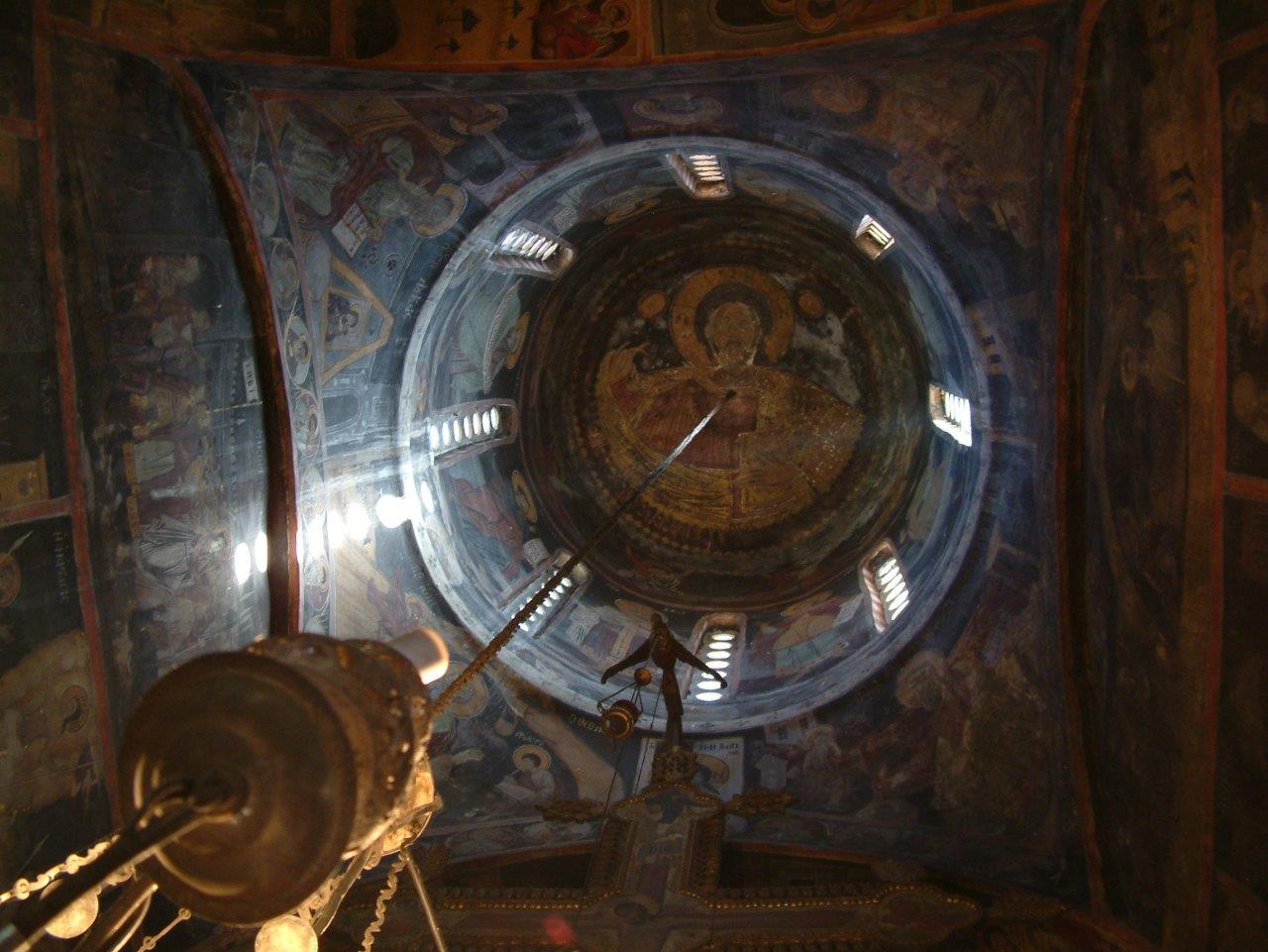

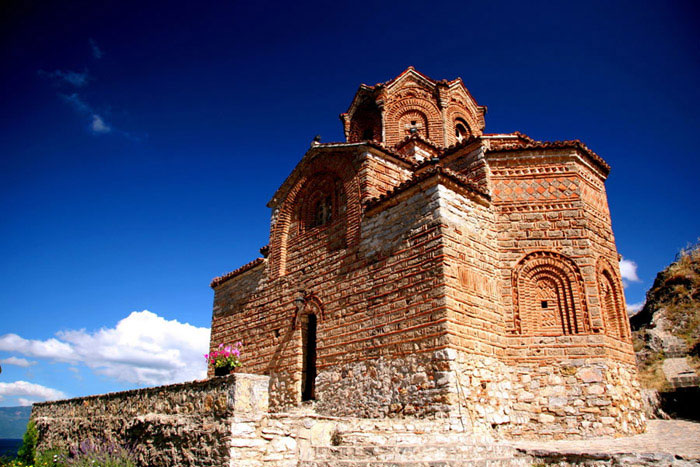
6. THE CHURCHES OF OHRID
There have once been 365 churches in Ohrid, one for each day of the year, and that is why Ohrid has also been referred to as the Jerusalem of Europe (the Jerusalem of the Balkans), the Pan-Slavic Jerusalem or the Second Jerusalem.Nowadays, within the territory of the Municipality of Ohrid there are more than 100 Orthodox churches, of which 60 are active; there are 10 Islamic religious buildings – mosques, and one Catholic church.

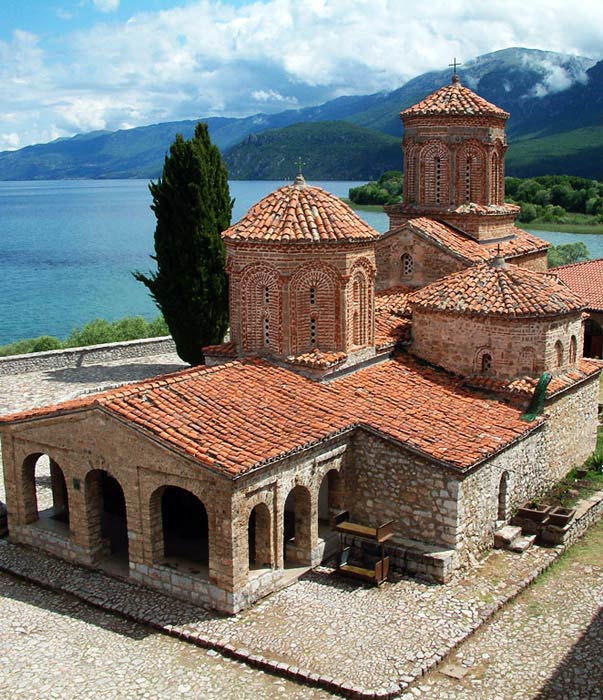

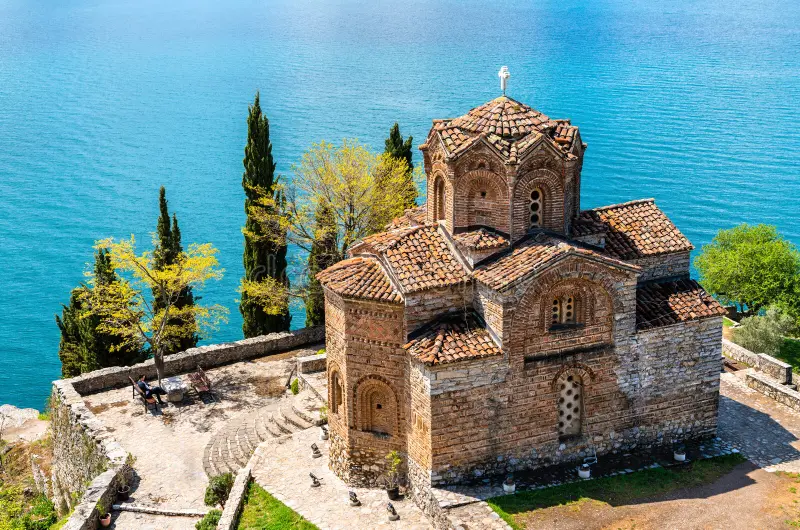

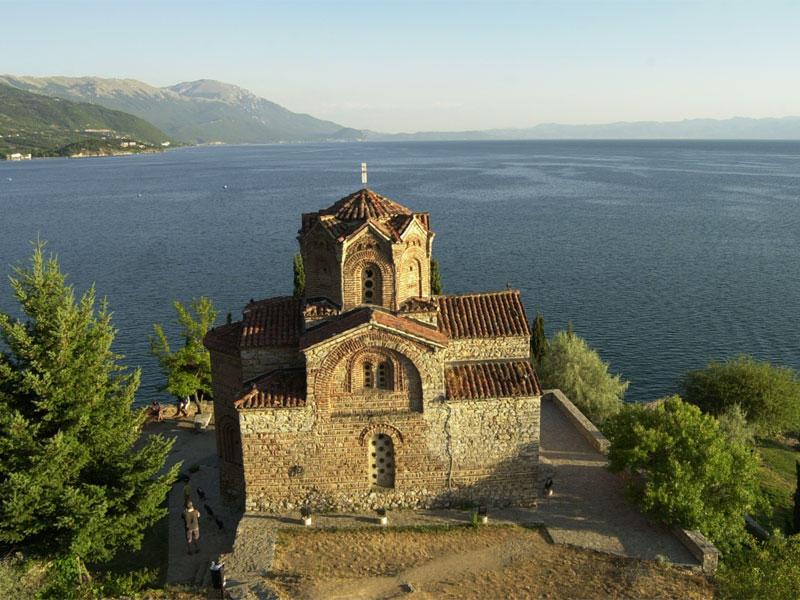
7. Church of Saint John Kaneo
The most photographed and picturesque church of Ohrid is surely the one dedicated to the author of “The Gospel of John” – St. John the Theologian, a church built upon a cliff above the fishing settlement Kaneo. On the base of the church there is a regular cross which is inscribed. The architect remains unknown, and it is assumed that the church was modeled after the Armenian ecclesiastic architecture influence. The church was thoroughly refurbished before the arrival of the Ottoman Turks on the Balkans (XIVcentury), and the church’s iconographic characteristics reveal a connection with the art traditions of the Byzantine Komnenian dynasty (XII century), which helps in producing a closer estimate of the chronology. From the Byzantine period the fresco of Christ the Pantocrator (the Ruler) on the dome stands out, and among the other frescos the one that catches the eye is the fresco on which the portrait of Saint Clement of Ohrid is depicted accompanied by the first Bishop of Ohrid, Saint Erasmus of Lihnidos (Ohrid). The church captivates spectators with its scenic location and inspiring spirituality, and the church is becoming more and more attractive for young people from all over the world to say the crucial “yes” there and enter into a Holy Matrimony!

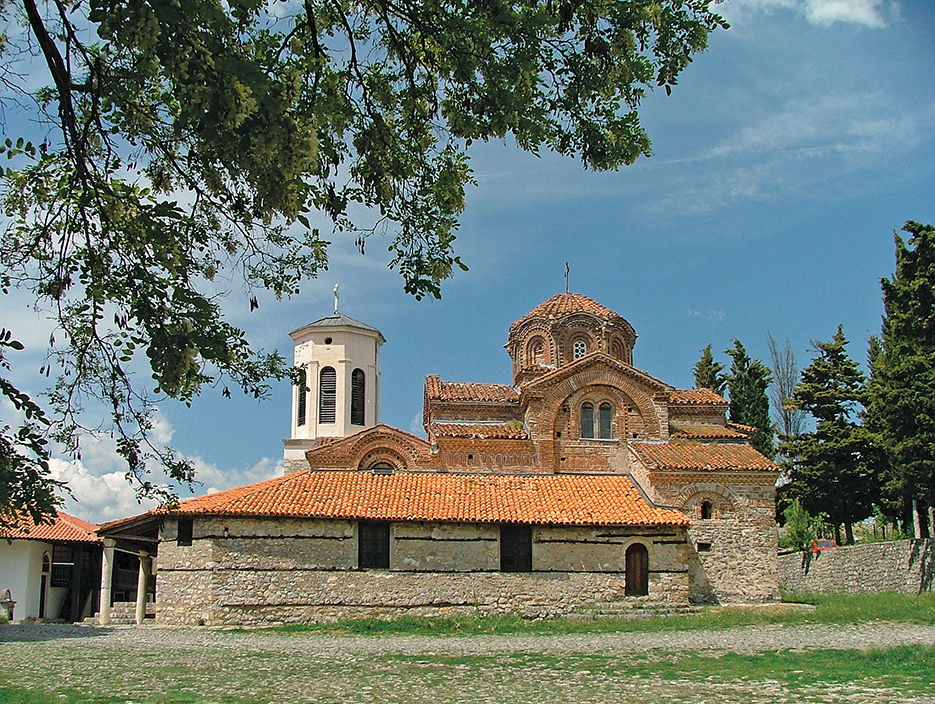

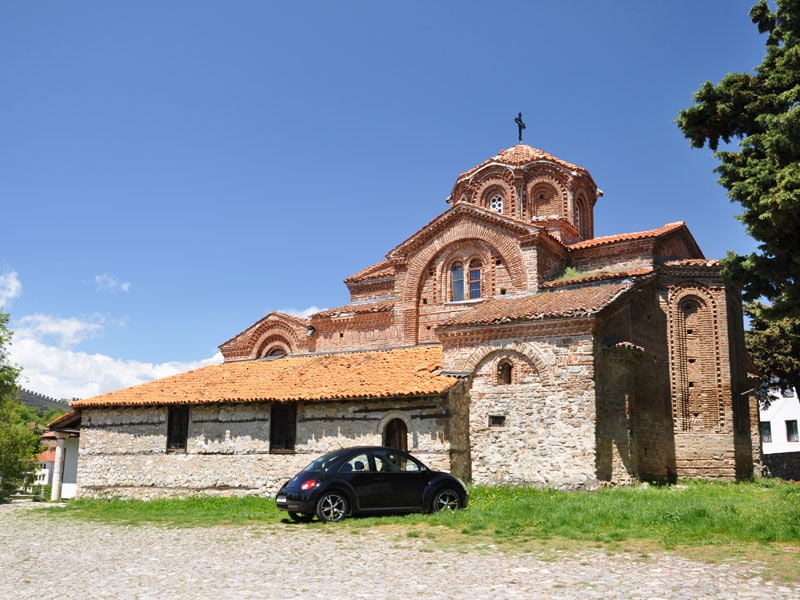

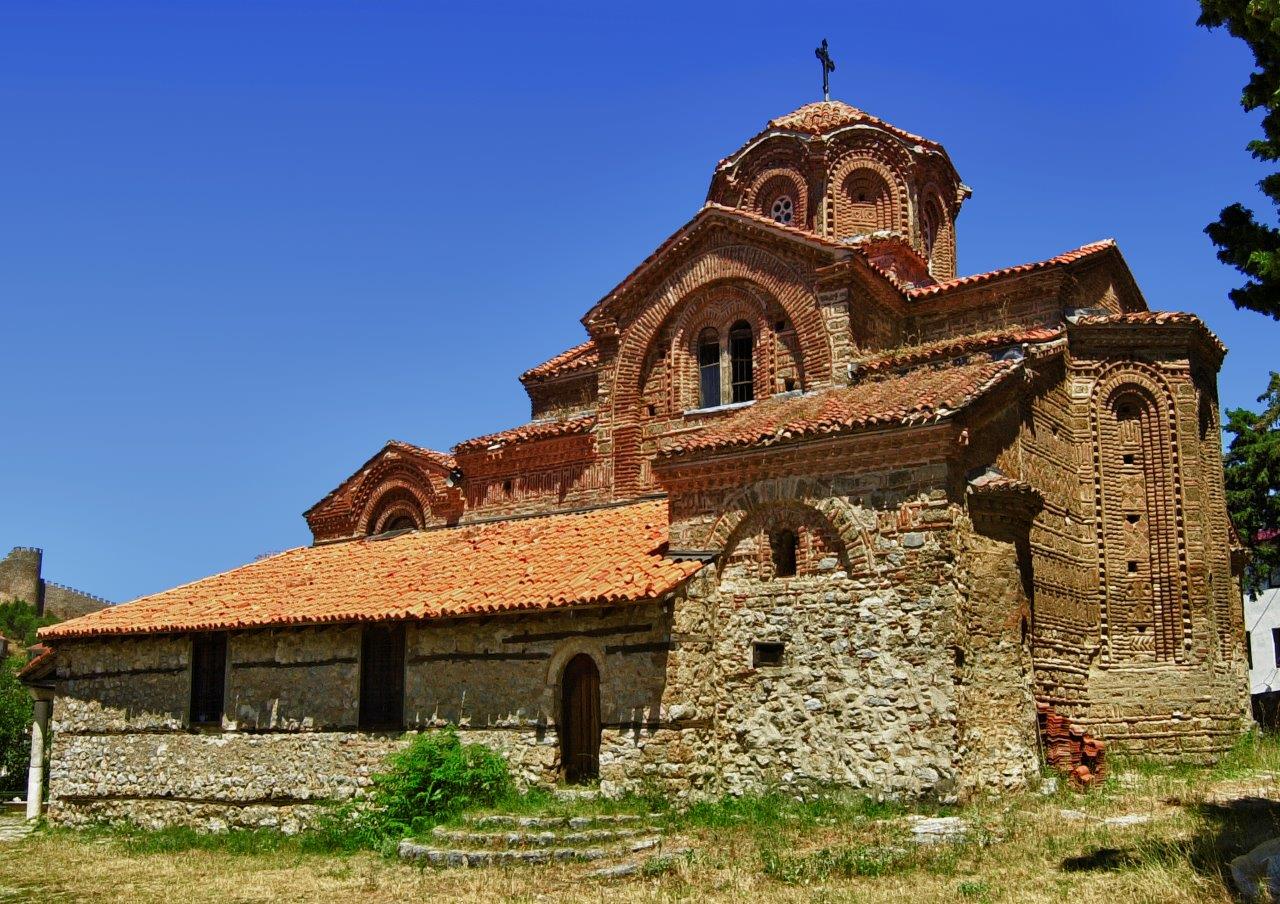
8. The Holy Mother of God PERIBLEPTOS
It rises on the highest platform in the historic part of the town and it is the third church by rank in the archbishop town-after the Cathedral Church St. Sofia and Clement’s St. Panteleimon. After the fall of Ohrid under Ottoman rule and the conversion of the Cathedral Church St. Sofia and the monastery St. Panteleimon into mosques, the relics of the patron saint of Ohrid St. Clement were transferred into this church and it became an influential gathering place for Ohrid’s inhabitants and worshipers, and a second cathedral of the Archbishopric of Ohrid, better known as the Church of St. Clement amongst the people. This church represents one of the most notable works of the architecture of Ohrid from the 13th century due to the symmetrically conceived space composition of the building, the solid wall structure in the execution of the components, the playful ceramic and plastic decoration of the dome area and the polychrome play of the limestone and the bricks placed in the form of blind arches, meanders, rhombuses, horizontal rows. In the fresco inscription in the narthex, the Byzantine military commander Progon Zgur and the year of the erection of the church, i.e., the year of the creation of the church’s paintings (1295), when Macarius was the Archbishop, are referred to. The paintings in the church represent the emergence of a new chapter in Byzantine art. They are a stylistically unified and there are pioneering art solutions which will constitute a paradigm for the painters of the subsequent centuries. In contrast to prior painting, here we discern thematic expansions and an increase in the number of figures and scenes in the composition. Here the painters Michael Astrapas and Eutychios introduce a set of novelties, which reflected the painters’ beliefs and aspirations towards individualization of the portraits and abandonment of the prior existing iconographic patterns. On the portrait, the Mother of God is shown with unbraided hair and immeasurable pain on her face, and the other figures are presented in a strained situation as well. There is a strong tension expressed by means of gestures and body movements which can rarely be found even in the Italian art of the time and afterwards. The young saints on the portraits are shown as vigorous and beaming with health, energy, with athletic bodies and fierce appearance. All the presentations are portrayed very realistically with a set of characteristic details, and the portraits appear more similar to ancient philosophers and poets than to saints portrayed on the walls of a cathedral. These painters developed this original style of interpretation on their own and prior to the appearance of Italian Renaissance painting – Giotto and the fresco painting of the beginning of the XIV century! Over the following centuries the one-time wealth has been halved and some of it has been taken to different museums; however, here you can still see the face of St. Clement of Ohrid, a wooden figure made at the end of the XII and beginning of the XIII century, representation of a saint carved into a statue is a real rarity in the Mediaeval Art of the Orthodox Church. Two thrones also draw one’s attention, of which one is dated to 1540, the time of the Archbishop Prochorus, made with mother-of-pearl incrustation, and the other one to 1895, the time of the Metropolitan Gregory, made with woodcarving!

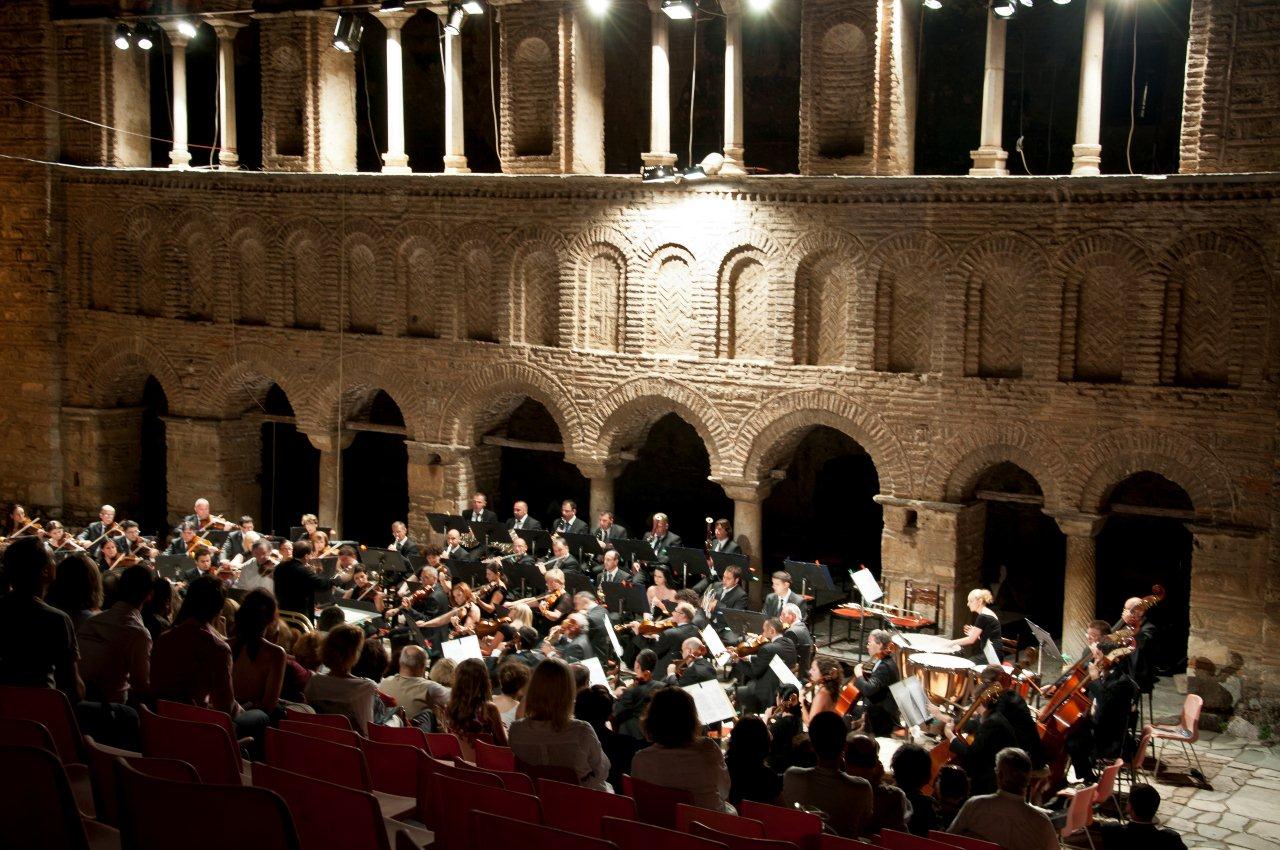

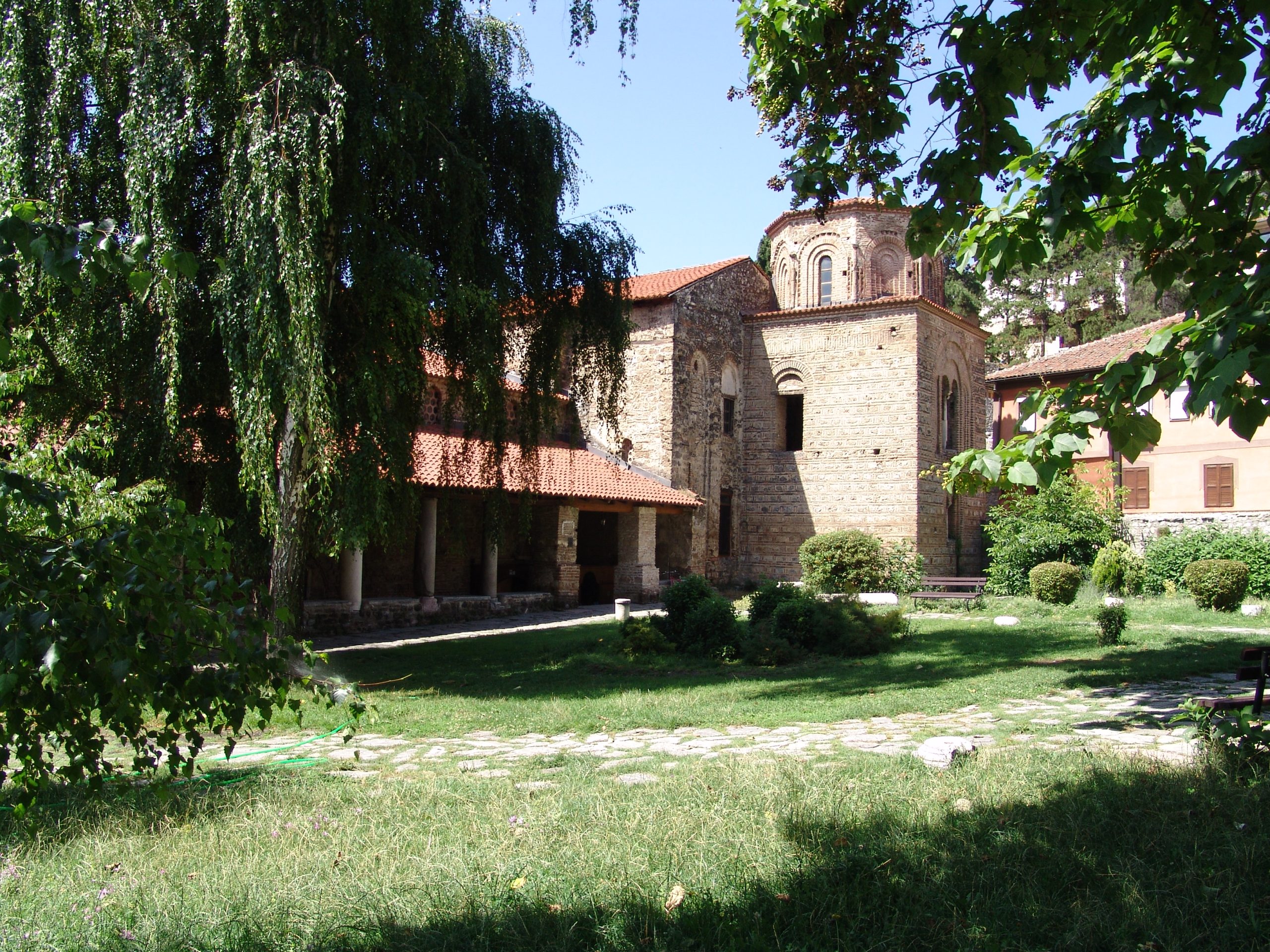

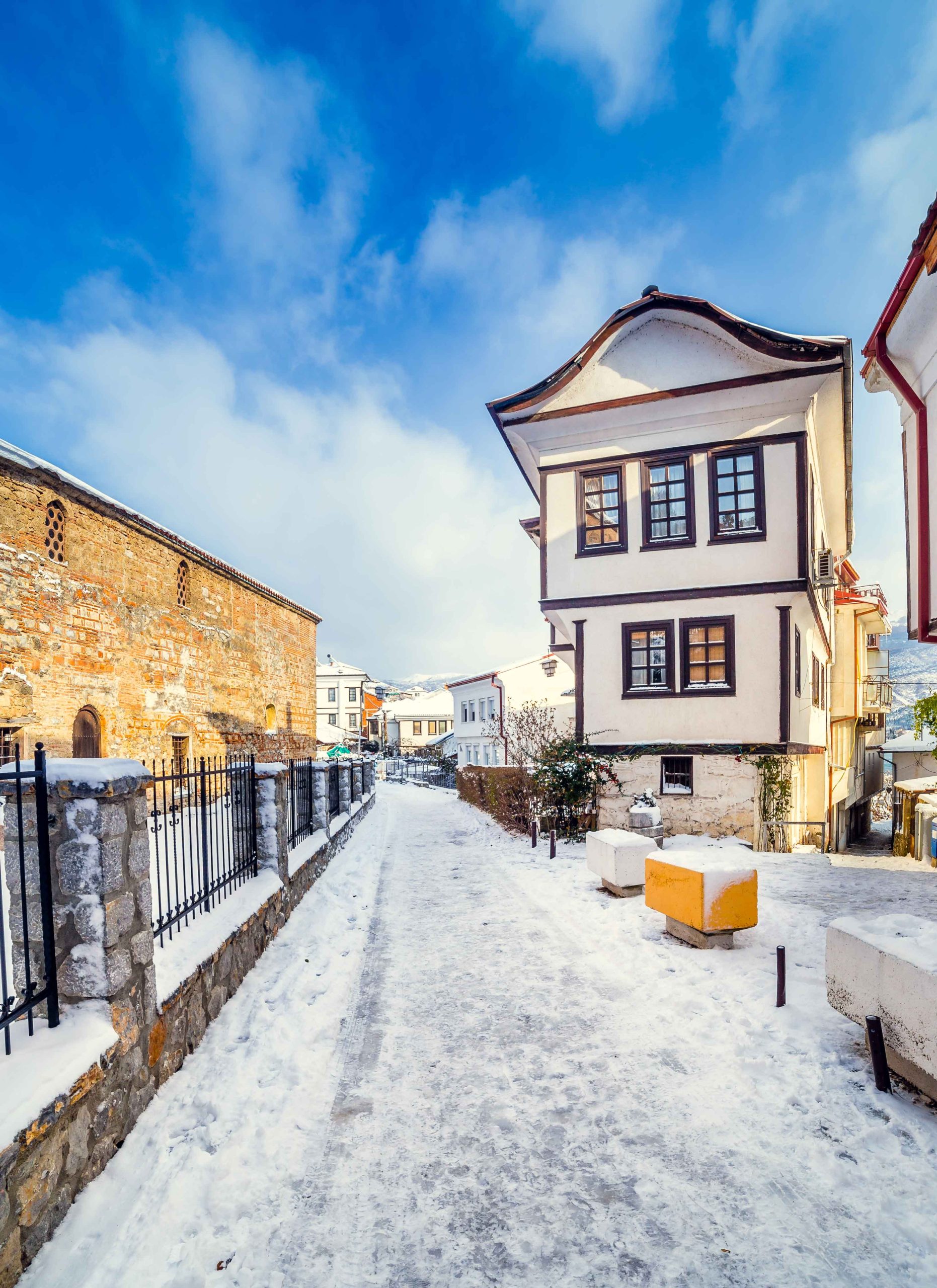

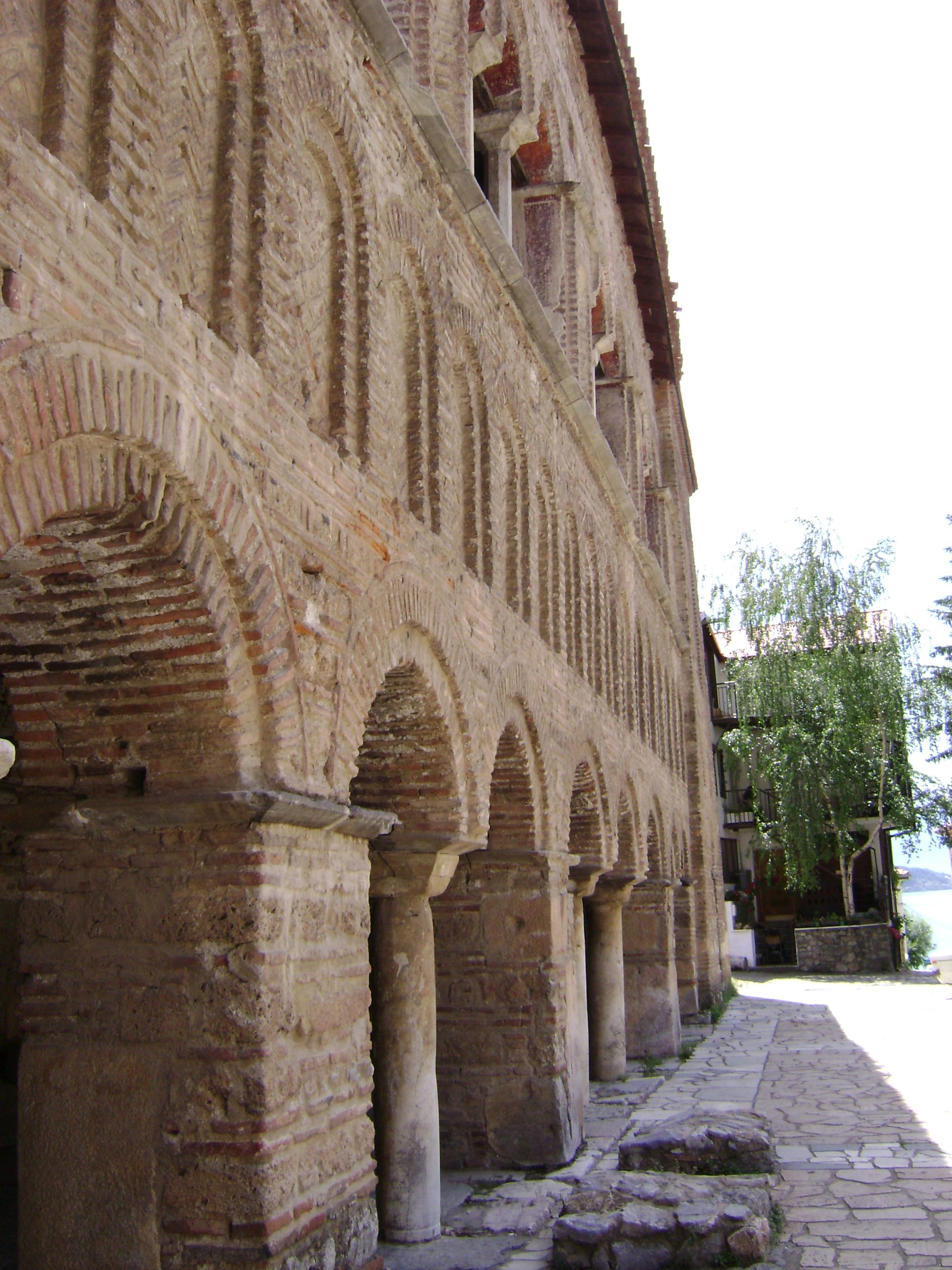
9. The Cathedral Church Saint Sofia
The Cathedral Church Saint Sofia(dedicated to Jesus as the Holy Wisdom) It is one of the largest and certainly one of the most notable Medieval Churches in this region. Built upon the foundations of an old Christian construction, in the time of Tsar Samuel (976-1014), this church was the seat of the Patriarchate of Ohrid, later on the cathedral church of the Archbishopric of Ohrid, and this Archbishopric in the subsequent centuries likewise distributed its church authority across the following territories: from Danube to the North, to the shores of Albania to the West, and to the Thermaic Gulf to the East. The church has been refurbished several times, and after the arrival of the Ottoman Turks, in the second half of the 15th century, the church was converted into a mosque and the frescos were covered with lime. During the Balkan Wars (1912) the church was used as a storehouse for weapons. After the Second World War, in the period between 1949 and 1956, the frescos were cleaned and preserved, and architectural interventions were also conducted.The paintings in this church represent a topmost achievement in the Medieval Art of Macedonia and over a wider area. It covers the most important preserved pieces of Byzantine monumental art. The church-benefactor of the paintings, the Archbishop of Ohrid Leon, namely an authorized negotiator in the longstanding dogmatic and theological dispute with Rome (1025-1054), which ended with a schism, visualized in this church a gallery of portraits, over sixty ecclesiastic dignitaries of the Churches of Constantinople, Jerusalem, Alexandria, Antioch and Cyprus, along with the portraits of six popes of the Roman Church. In this church Saint Cyril of Thessaloniki (and preserved fragments of Saint Methodius) and Saint Clement of Ohrid are portrayed in full, by which the Ecumenical status of the ecclesiastic seat of Ohrid is confirmed. At the same time, these are the oldest preserved frescoes of these saints in Byzantine art. Only in Saint Sofia, in the world’s largest gallery of archpriests, dignitaries from the Eastern and Western Christian Churches are painted together, which cannot be found elsewhere in Byzantine art or in the art of the Slavic countries. In addition to its importance as a monument, Saint Sofia is still an active church, and due to its magnificent acoustics, this church represents a key location for cultural events – concerts and plays from 1961 onwards.



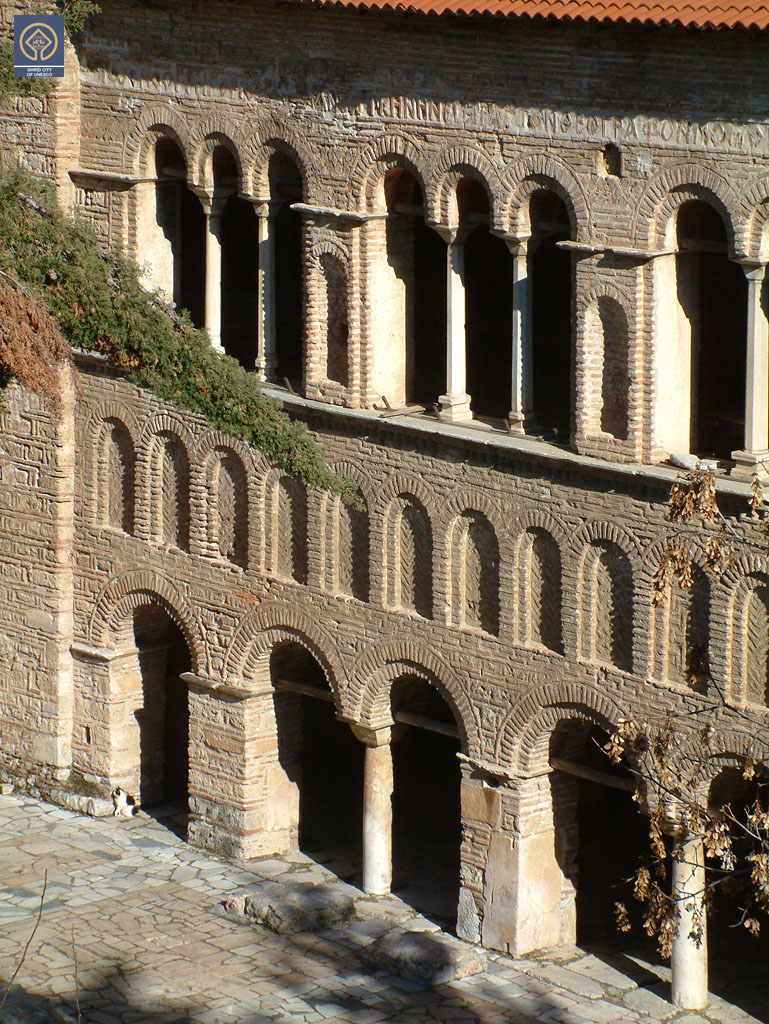
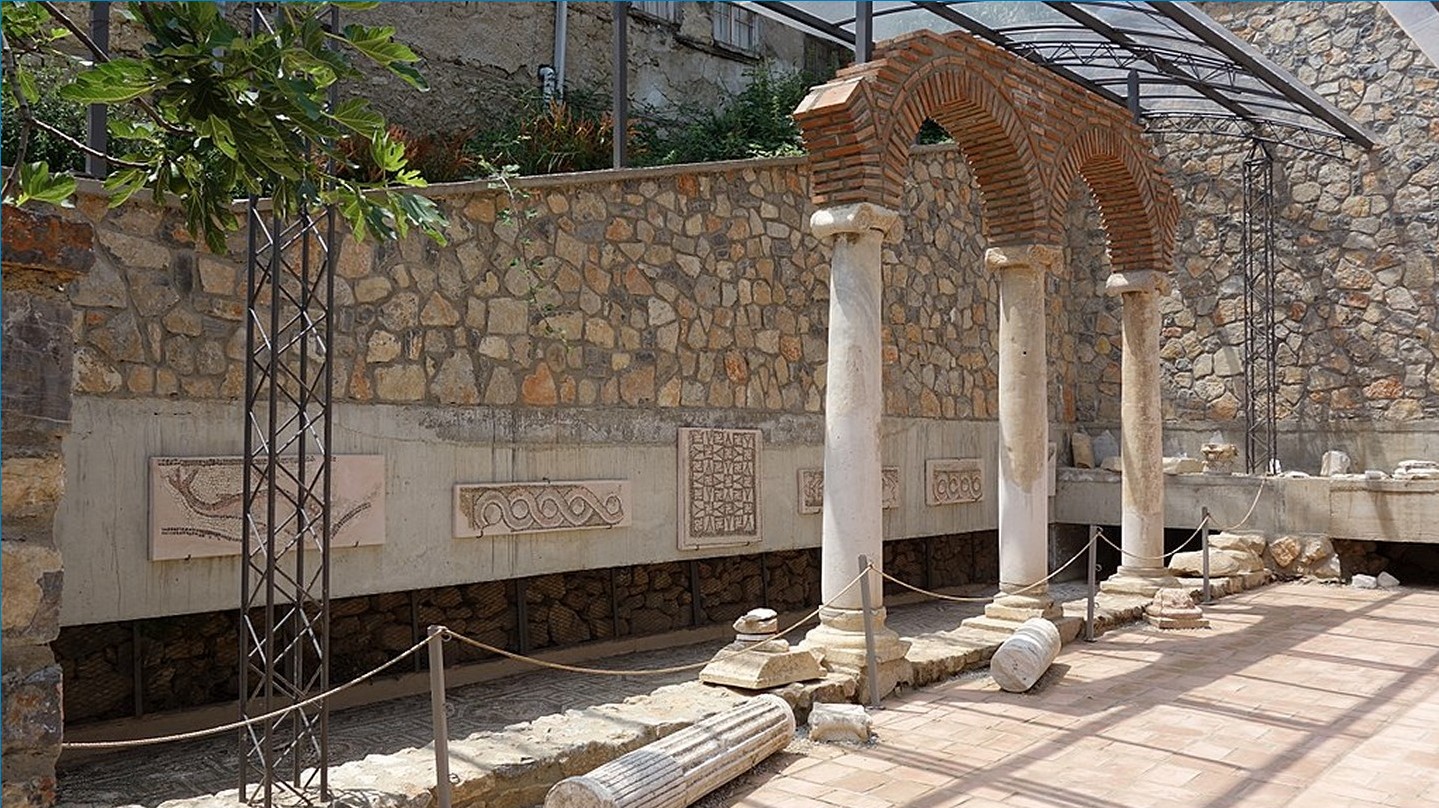
10. Manchev people
Manchev people – archaeological site in Ohrid. It represents a basilica from the early Christian era (IV or V century). It was discovered in 2009 during construction works on two individual houses in the old city center of the city. In 2012, it was preserved and presented to the public. The basilica is specific for its mosaic floors, of which there are a significant number.

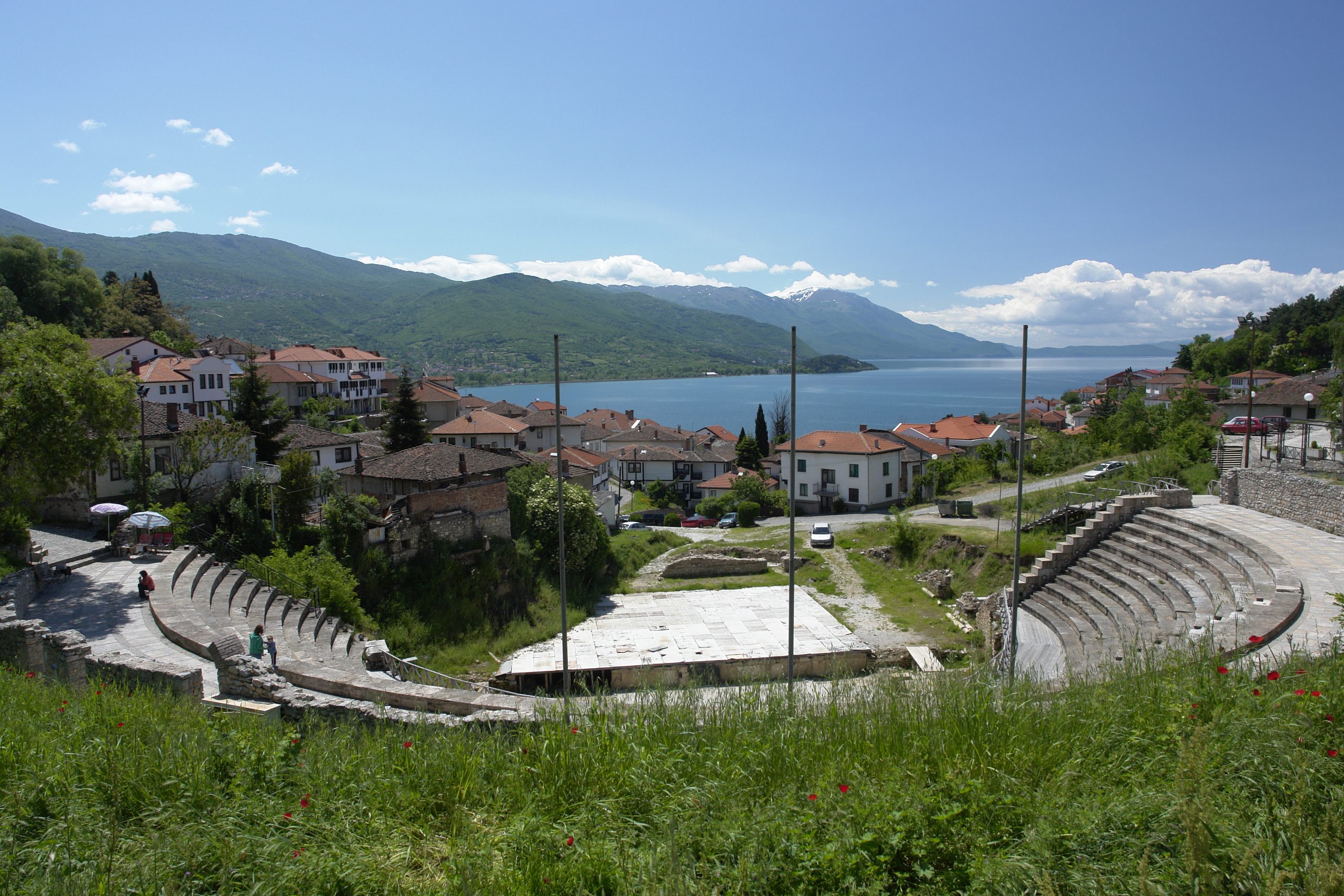

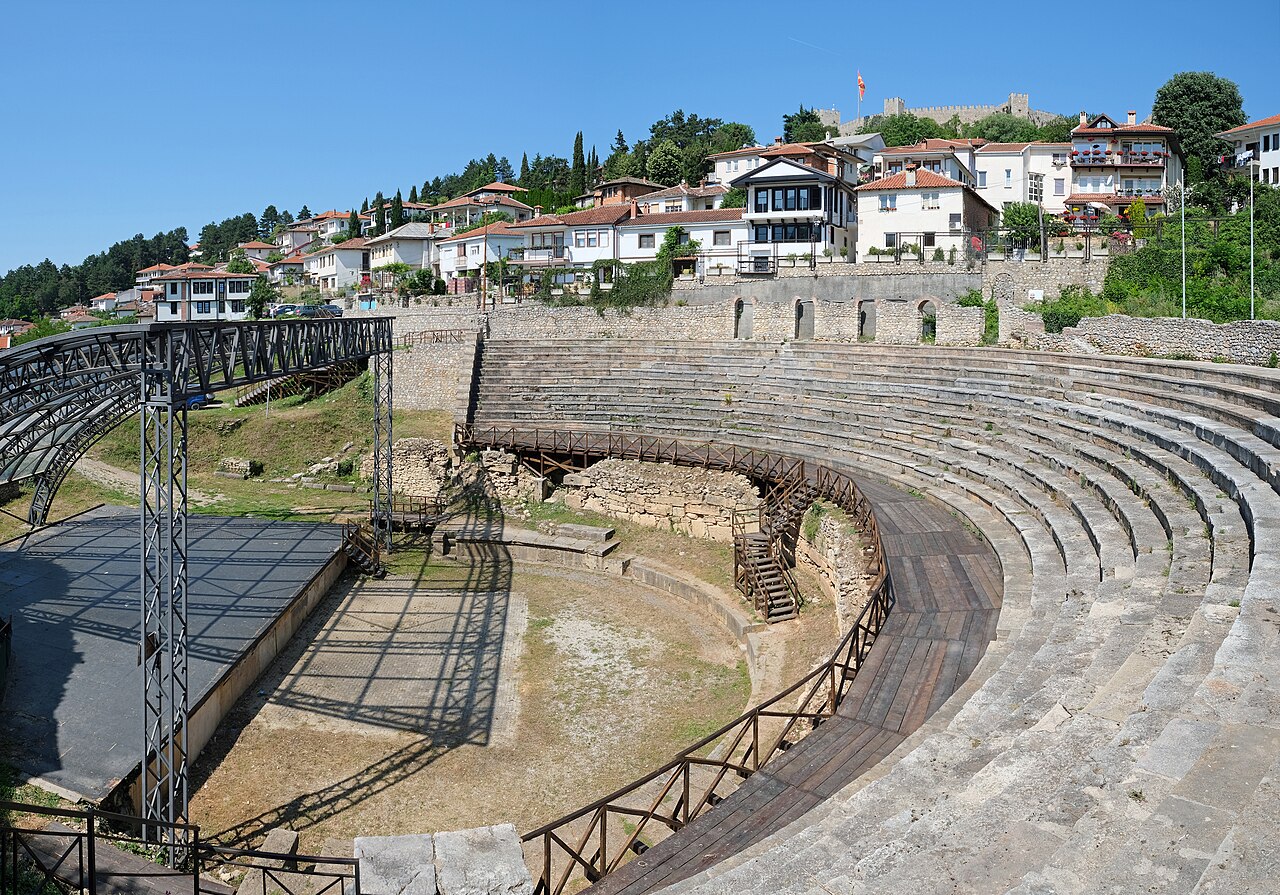

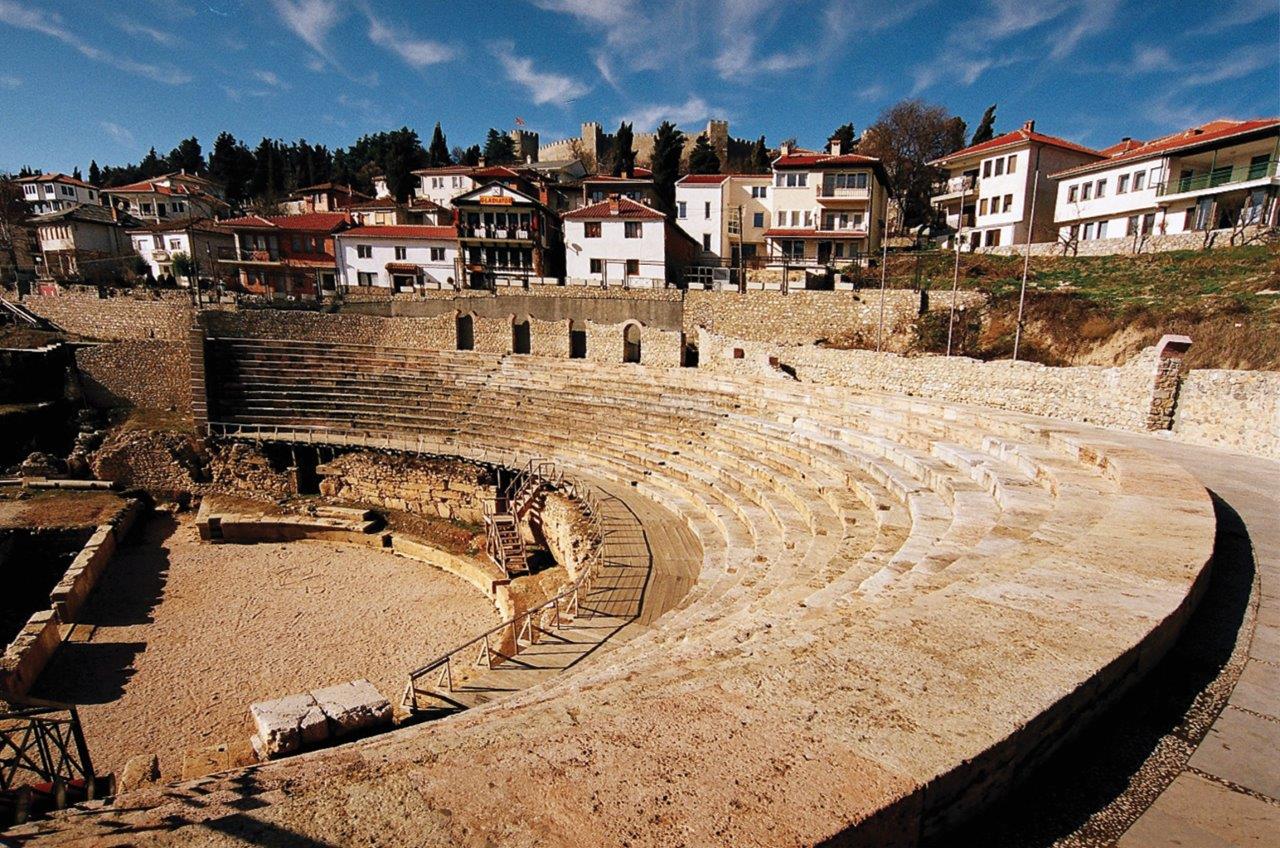
11. ANTIQUE THEATRE
Ancient Theater bears witness to the rich cultural life in antiquity and the Roman period. It is located at the foot of the eastern slope of the higher Ohrid hill, under Samuil's fortress, near the Upper Gate, from where you can capture an unforgettable view of Lake Ohrid and the mountains that surround it. The ancient theater was built two millennia ago, during the late Hellenistic period, and was adapted immediately after the Roman conquest of these parts. The first data about the existence of this theater appear in the literature at the end of the XIX century and the beginning of the XX century. Its original purpose was a stage and auditorium for theatrical performances, but four centuries later, the then resident Marco Aurelius restored and remodeled this building into a theater space with an arena for fighting gladiators with wild animals, for which he built cages, removing the first rows from the auditorium. He did it in honor of the recent visit of the emperor Septimius Severus (ruled the Roman Empire 193 - 211.) The assumptions and claims of scientists about the existence of the unexcavated theater date back decades, and the first efforts to discover it were started in the middle of the last century, while it was completely conserved and restored in the first years of this century. With its regular use, a new quality was obtained in the presentation of world musical spectacles, concerts and theatrical performances. It was the first theatrical performance in the still incompletely preserved theater "Martolozot" ("Serdar") within the festival "Ohrid Summer" 1993, according to the text of Ohrid's second Homer, the poet and essayist Grigor Prlichev (1829 -1893).




12. THE GALLERY OF ICONS
Since Ohrid has a great number of churches, it is obvious that it also has a great number of icons. Taking into consideration the significance of icons, it can be said that Ohrid has the most valuable collection of Byzantine icons along with the collections from the Sinai monastery, from Egypt, from the Hermitage Museum and from Saint Petersburg.Because of their significance, the icons belong to the World Treasury of Priceless Objects. There is no exhibition, catalogue or book about Byzantine painting which can be complete without the icons of Ohrid. Masterpieces produced by different artists from different periods and from different churches are gathered at one place today – in the Gallery of icons which is right next to the St. Mary Peribleptos Church.The collection comprises of many icons painted throughout a millennium, starting from the XI century until the XIX century. It is an amazing and inseparable part of the rich cultural and historical heritage of Ohrid, the town where the Slavic literature and culture started to develop.In the old school building of the St. Clement of Ohrid, built in 1840 in a modernized and protected space, about 30 icons were exhibited, some of which were painted in Ohrid Medieval painting workshops and some were given as gifts by rich people and were brought from centres such as Thessaloniki and Constantinople.The oldest Ohrid icons represented the fresco painting of the same time due to the trend in the painting at that time and the same art school. They are characterized by monumentality, stiffness of the expression and strange calmness coming out of the faces of the saints. The oldest icon in Macedonia which is at this gallery of icons is from the middle of the XI century and it depicts St. Basil the Great and St. Nicolas. Furthermore, “Forty Holy Martyrs” is the oldest icon which depicts such theme. What is characteristic of both icons is that they have an artistic approach which coincides with the painting of the Cathedral Church St. Sophia. The icon which depicts the apostles attending the Holy Communion also has the characteristics of this period. Two separate icons from the composition “Annunciation” date from the second half of the XII century.

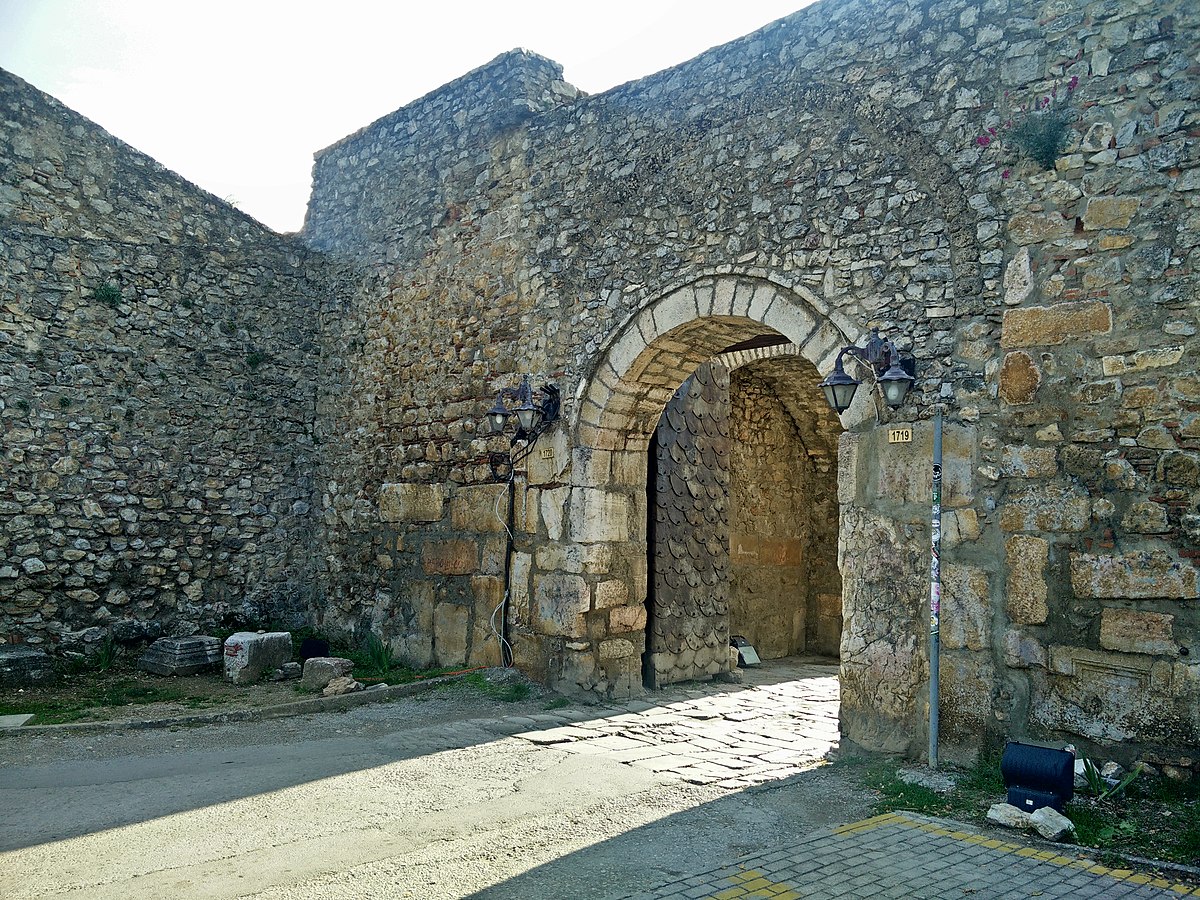

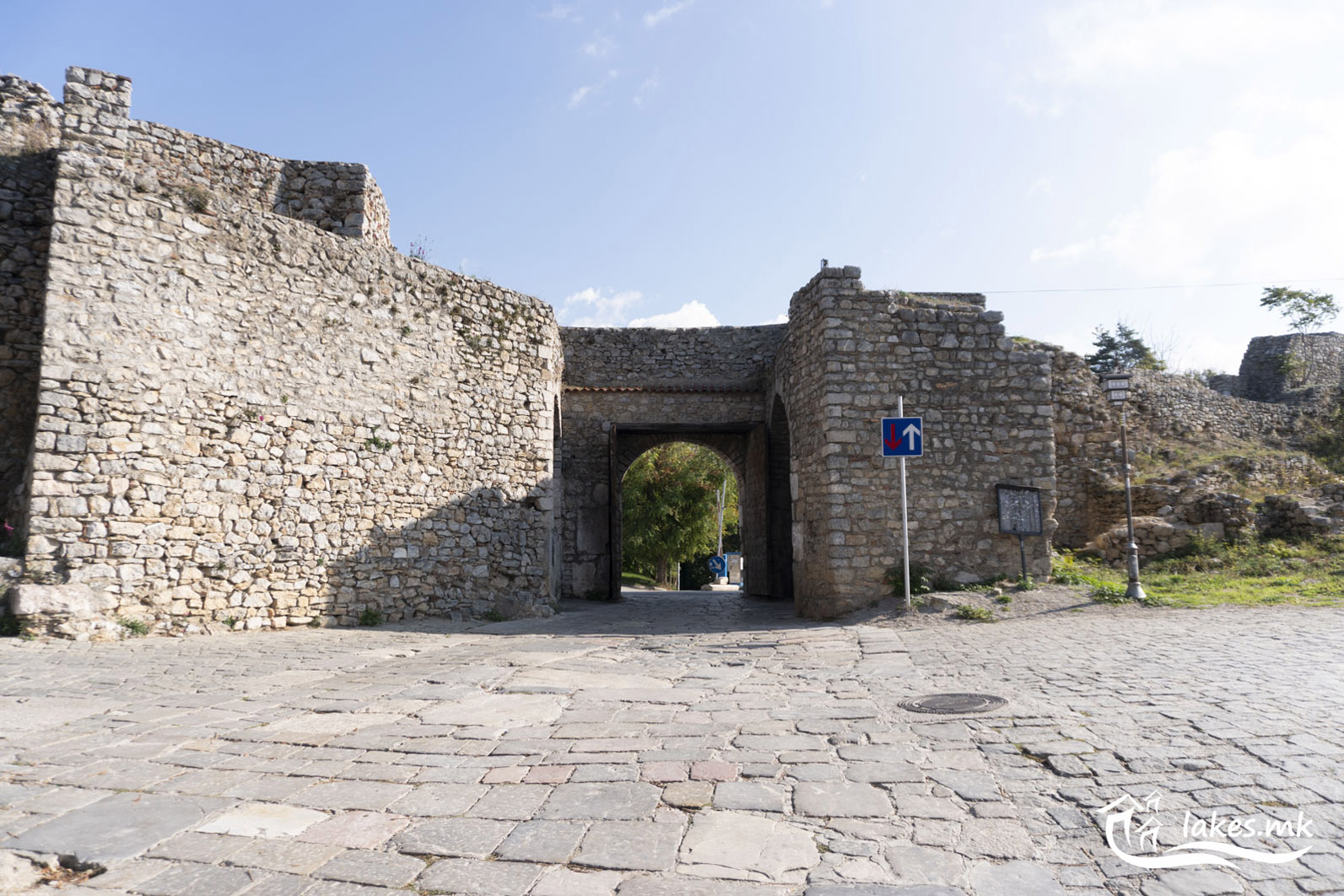
13. Upper Gate
The Upper Gate is built of heavy stone blocks, the door is made of solid wood and is covered with metal plates.Prestores a necropolis from the Macedonian-Hellenistic period, that is, somewhere from the 3rd-2nd century BC. AD From the research in 2016, 85 graves were discovered, of which 12 were from the Macedonian-Hellenistic period, that is, somewhere from the 3rd-2nd century BC. AD the other graves were from the Ottoman period, from the period of the 15th to the end of the 18th century.[1] In the tombs of the Macedonian-Hellenistic period, which have burial structures made of rough stone, a variety of accessories characteristic of that period of burial were found, such as ceramic amphorae, molded cups, parts of military equipment - spears, knives, jewelry - gold earrings with representations of eros, necklaces with glass paste beads, pendants, fibulae and rings, and bronze vessels were also found in three graves.

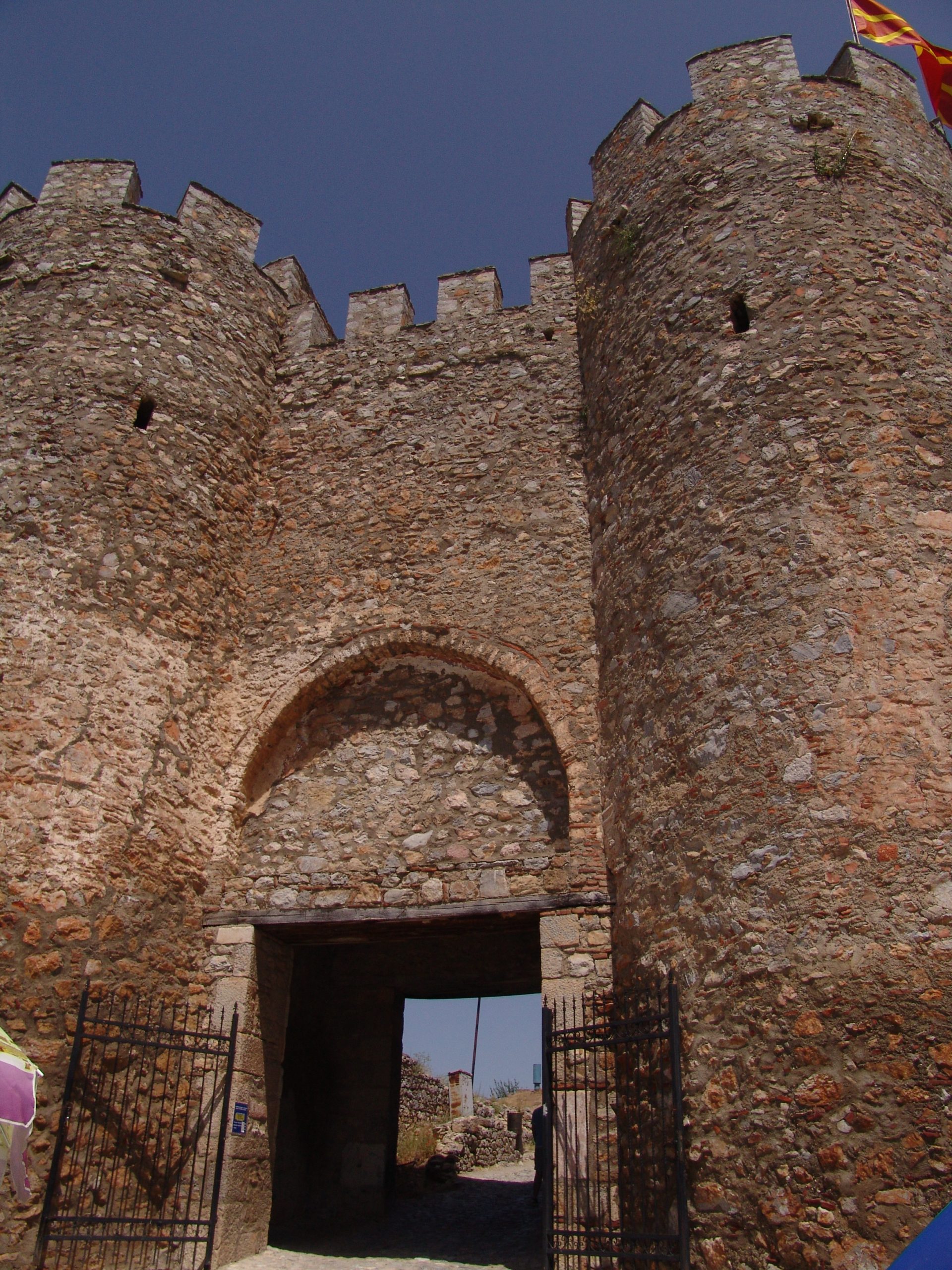

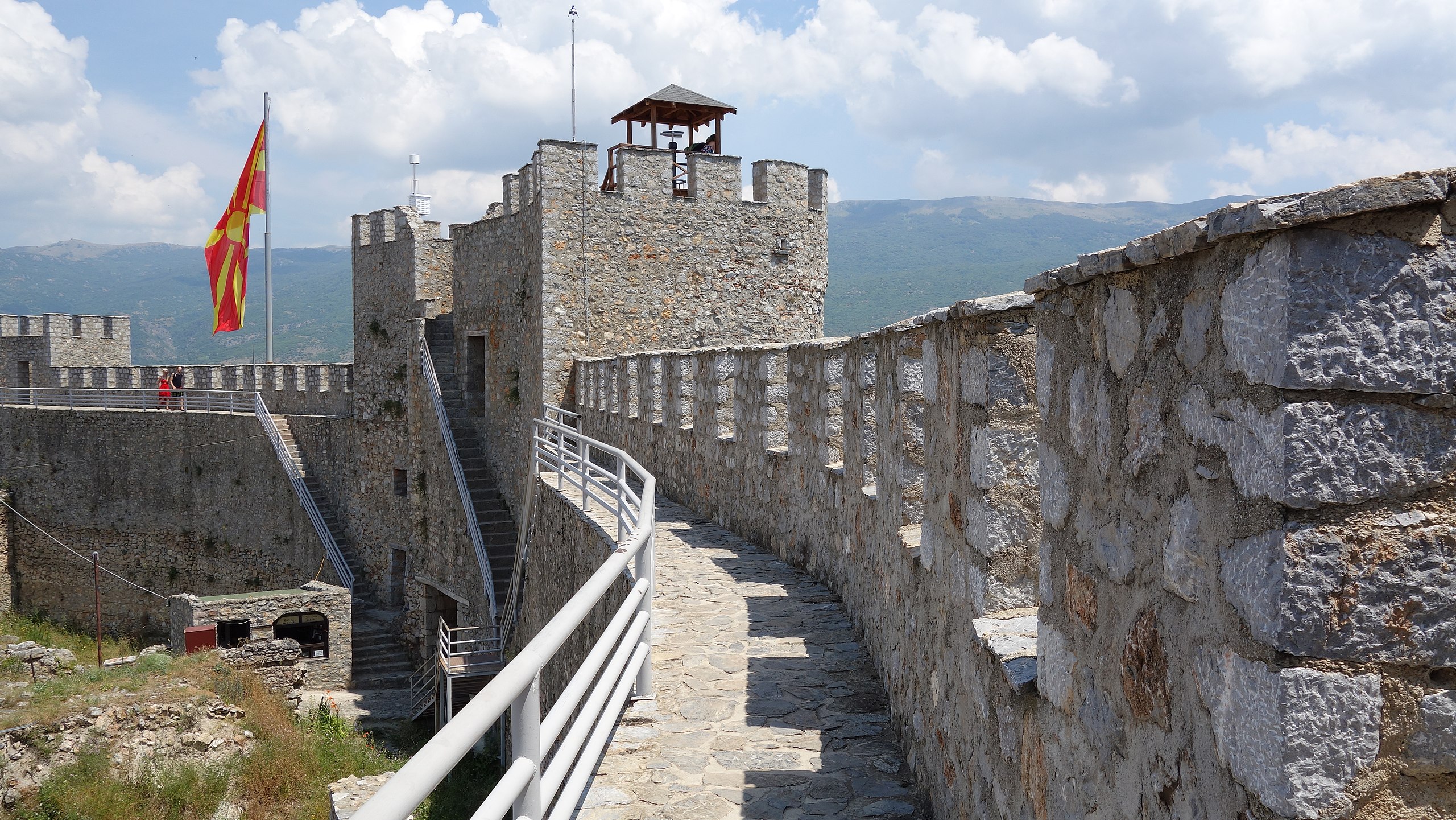
14. SAMUEL’S FORTRESS
SAMUEL’S FORTRESSSamuil's fortress is a trademark of Ohrid and its image is incorporated into the coat of arms/emblem of the city. It is a part of the Ohrid fortress that stretches for 3 km and goes around the entire old city center of Ohrid Varos. The rampart has a total of 18 strong defensive towers and five gates – iron gate, eastern gate, Upper gate, Front gate and lower gate, some of which are still in operation today. The citadel, which is better known as Samuil's fortress, is located on the highest plateau, one hundred meters above the lake. Its walls are very wide and high (up to 20 m) and offer an excellent opportunity for walking, taking pictures and enjoying the wonderful all-round view of the entire city, the lake and the surrounding mountains. Telescopes are placed on the towers, which enables visitors to better observe the surroundings. Archaeological data indicate that the oldest walls of the fortification date back to the time of Philip II of Macedonia, and the fortress, together with the city of Lychnid, was first mentioned by the ancient historian Livy in 209 AD. BC The present appearance and the extension of the fortress and the citadel were probably formed in the IV century of our era. The real shape of the citadel took place at the end of the 10th century and the beginning of the 11th century, when it became the capital of the first Macedonian-Slavic kingdom during the reign of King Samuel. It was impregnable for many years afterwards, but the years and centuries take their toll. At the beginning of the 19th century, the semi-independent lord of Ohrid, Djeladin Beg, adapted the citadel into his summer residence and harem - also known as Gorni Saraj. After some time, the barn was burned, looted, partially destroyed and abandoned. The latest archaeological investigations in the fortress and the citadel speak of an uninterrupted continuous life from the 6th century BC until today.

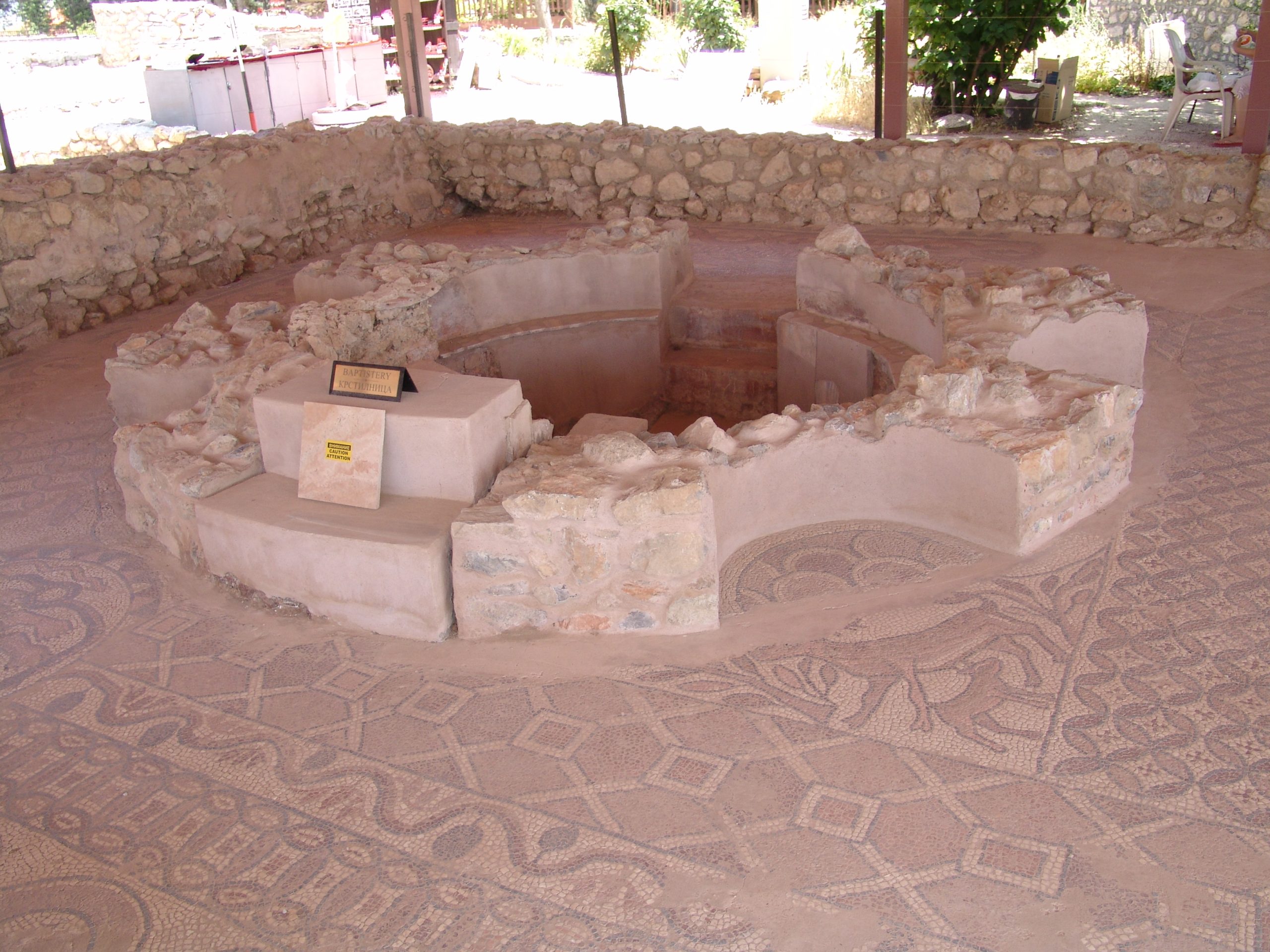

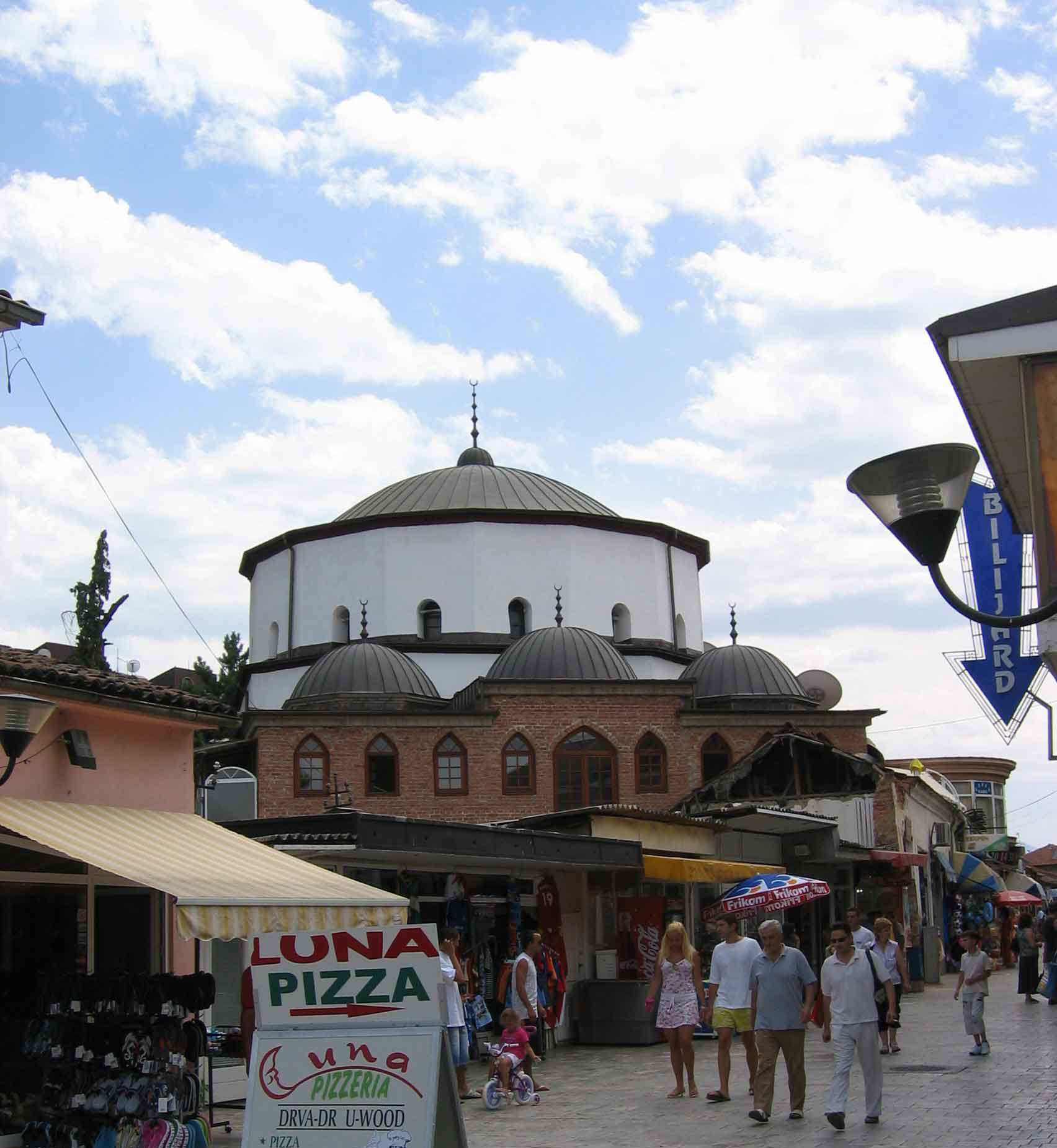

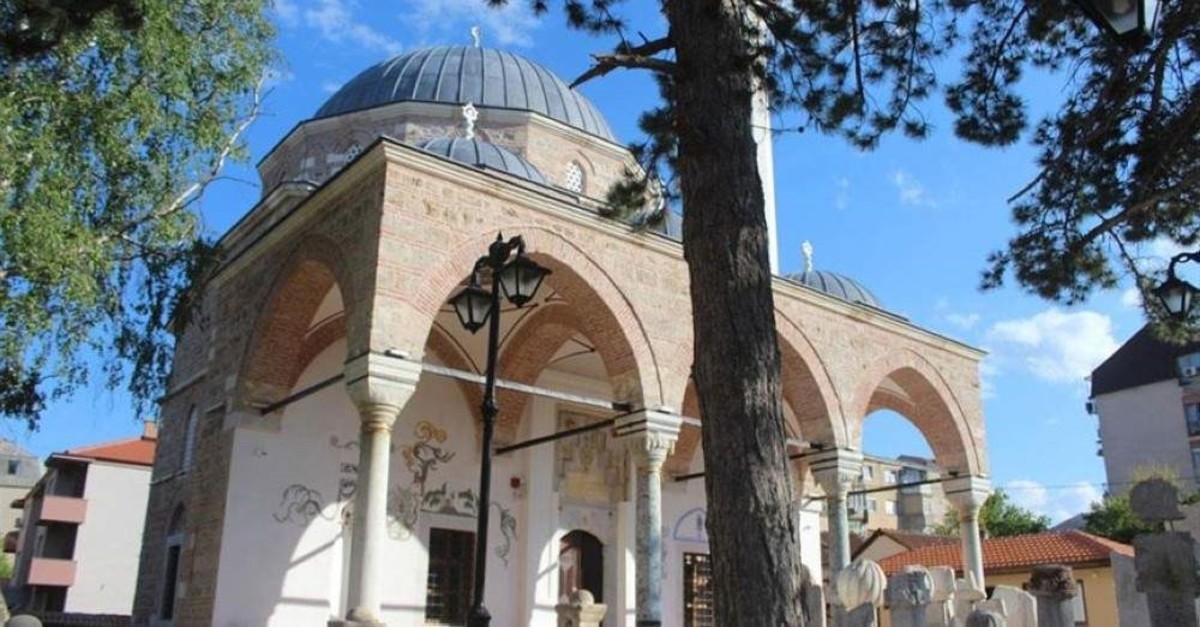
15. ALI PASHA mosque – description and meaning
Along the Ohrid bazaar are also important Islamic monuments such as the Ali Pasha Mosque from 1573, whose dome is very remarkable, and the shrine of the Ohrid Dervishes - Halveti with the mosque built in 1590. From Chinarot, at the beginning of "St. Kliment Ohridski" street in the bazaar, above the numerous shops, the dome of Ali Pasha mosque, built in 1573 by Suleiman Pasha, dominates. In 1823, an adaptation was carried out by Vizier Ali Pasha, whose name it still bears today. In the first years of the 21st century, new construction adaptations were carried out on this mosque in Ohrid.

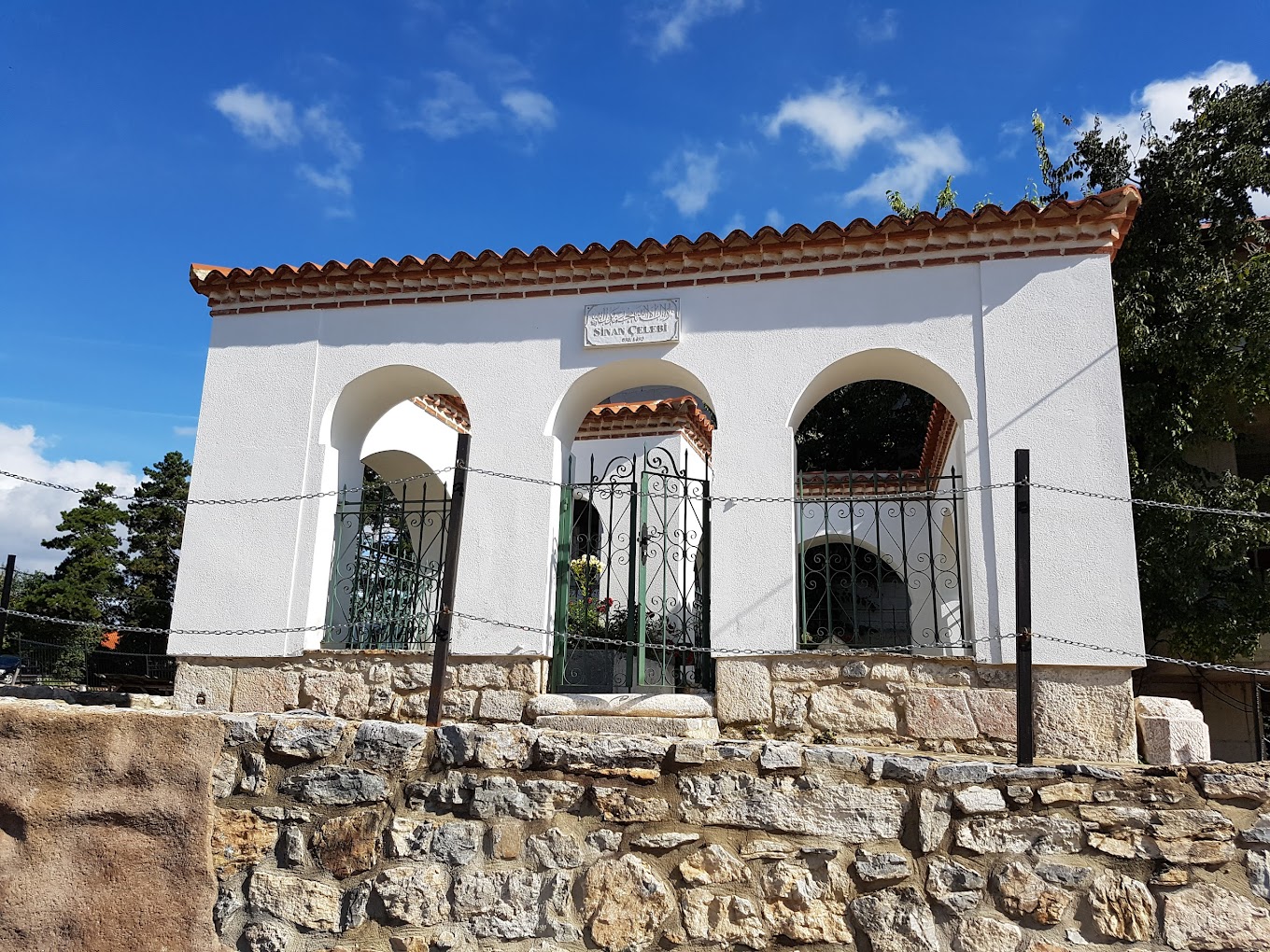

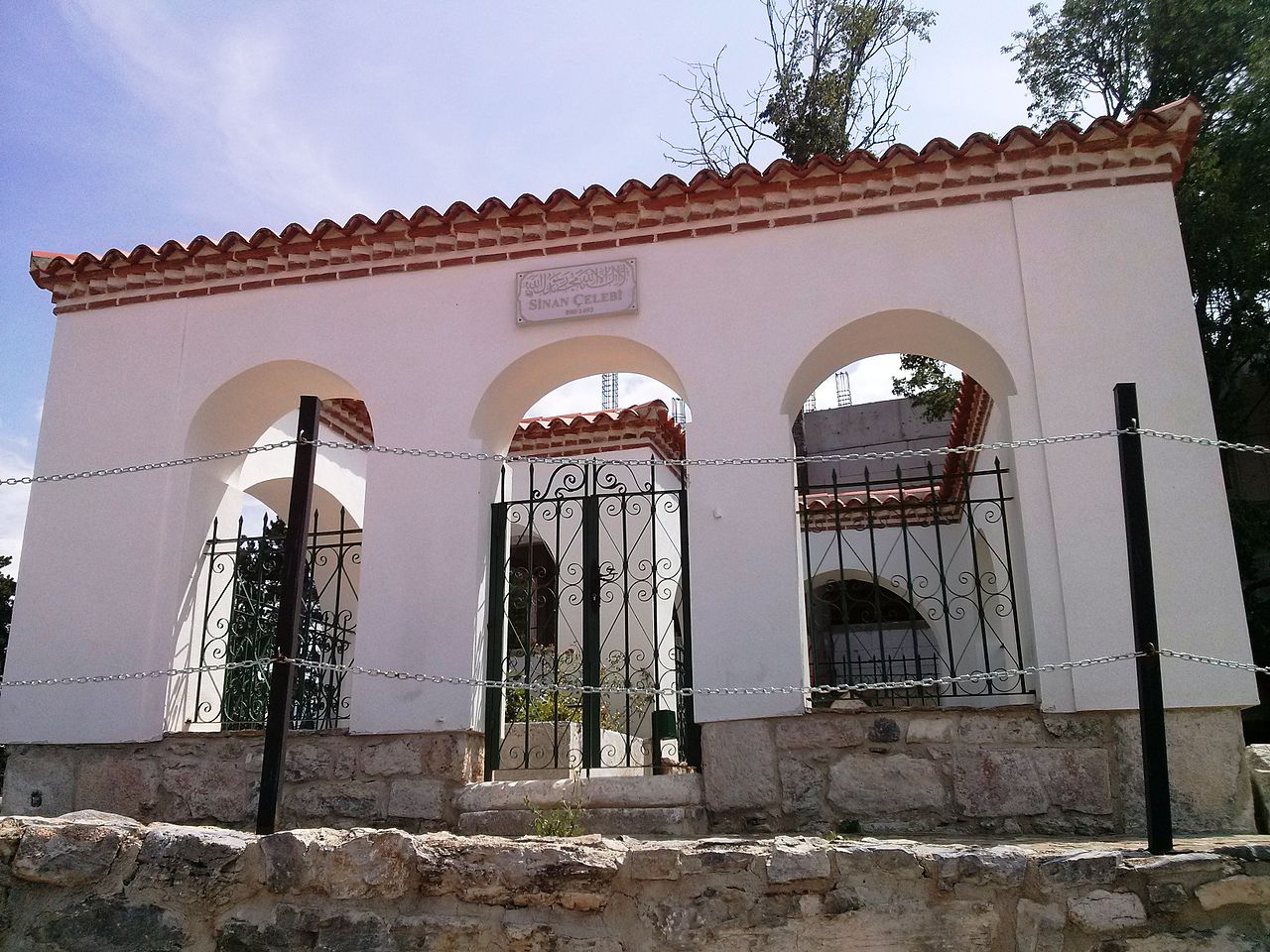
16. Sinan Celebi Тeke – description and meaning
Adjacent to the restored monastery church of Saints Clement and Panteleimon, there is the turbe in which Sinan (Yusuf) Celebi was buried in 1493.

